Restrictions on social and economic activity may have to remain in place for “the long haul”, as a coronavirus treatment or vaccine could be more than a year away and may never arrive, Boris Johnson has warned in a document setting out a limited relaxation of lockdown.
The 60-page Covid-19 Recovery Strategy document sets out detailed guidelines for changes to lockdown rules to apply in England from Wednesday, including a return to work where it is safe for those unable to do their jobs at home as well as new freedoms to take outdoor exercise and spend time sunbathing or picnicking in parks.
It confirms for the first time that the government is advising the wearing of face-coverings – but not medical face-masks – in settings like public transport and some shops.
Download the new Independent Premium app
Sharing the full story, not just the headlines
And it sets out longer-term plans for schools and non-essential shops to start reopening from 1 June and reveals that the government is considering a move to allow “social bubbles” of two households who can mingle with one another.
But it makes clear that any easing of restrictions is conditional on there being no resurgence of the virus, with the government reserving the option of reimposing a tight lockdown nationally or locally if there are signs of the outbreak flaring up again.
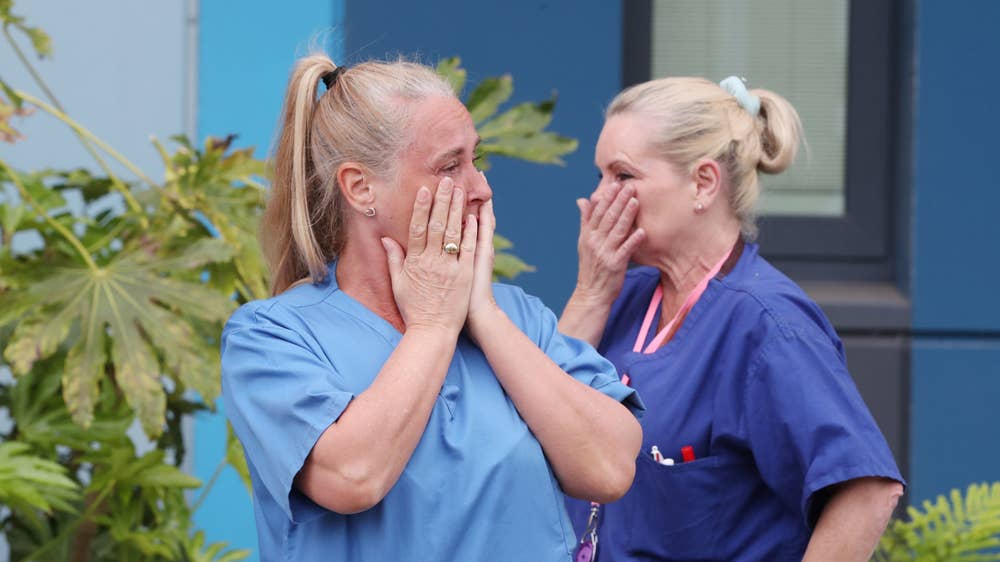
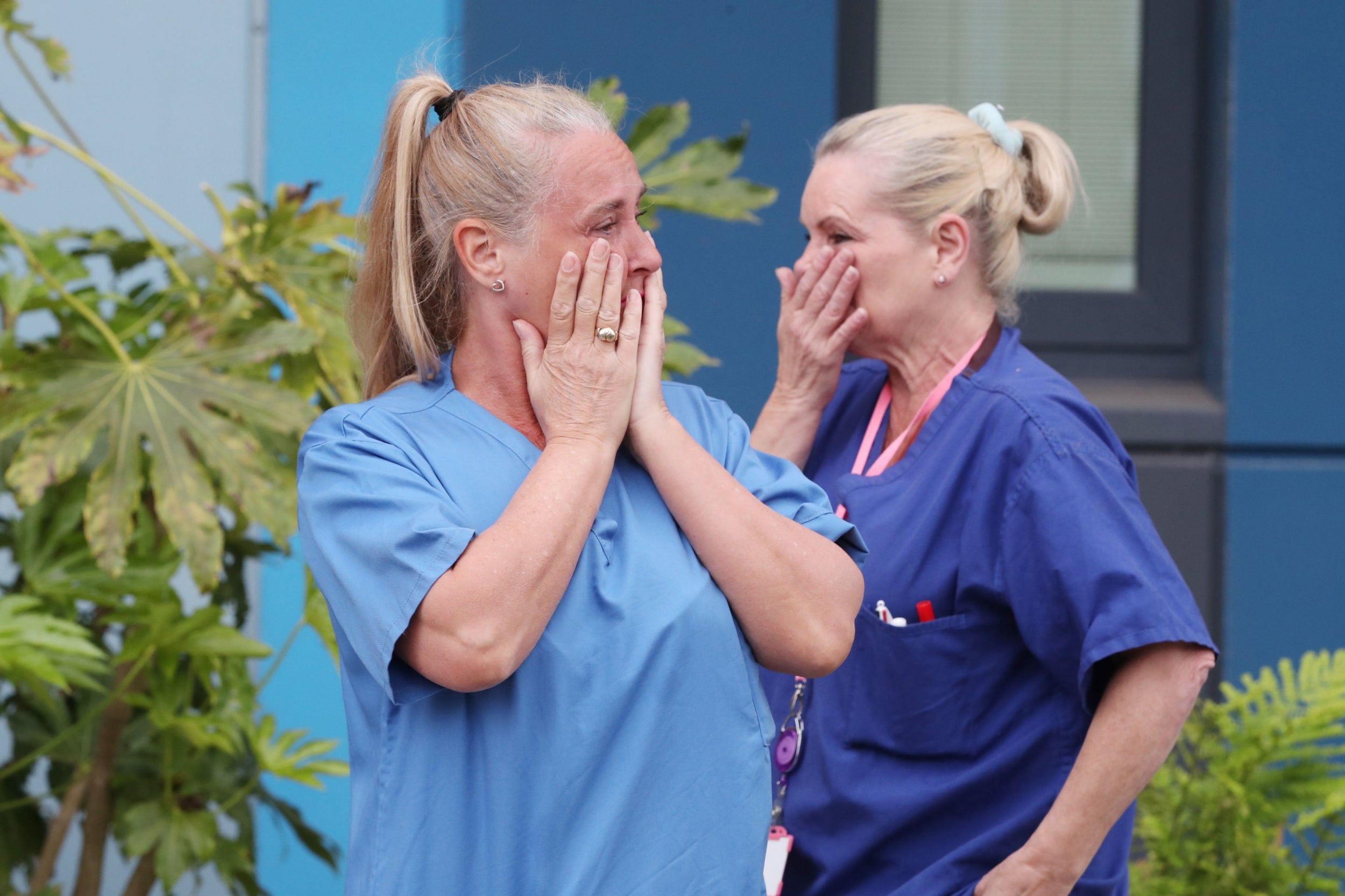
1/30
Staff react outside Salford Royal Hospital in Manchester during a minute’s silence to pay tribute to the NHS staff and key workers who have died during the coronavirus outbreak
PA
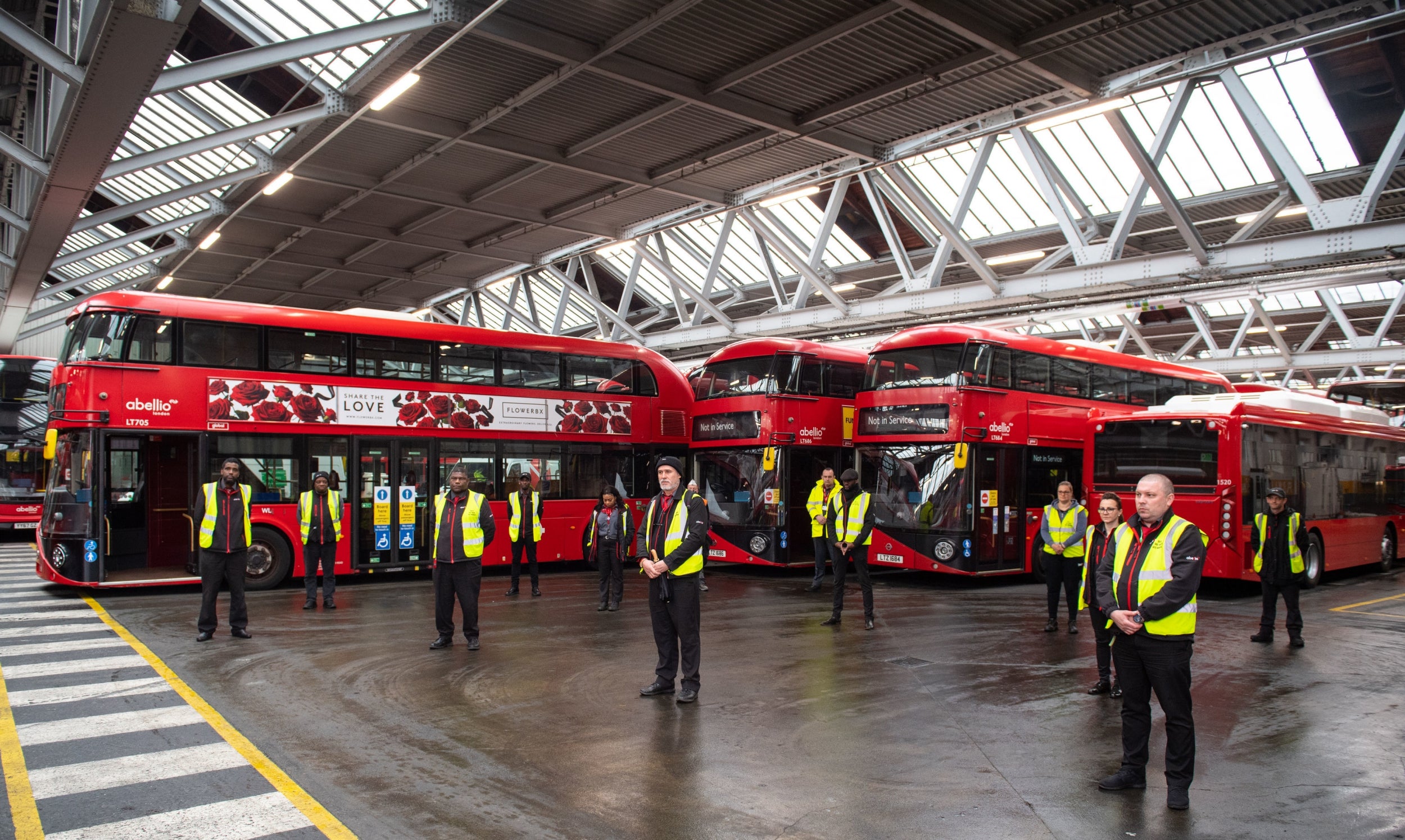
2/30
Staff inside Camberwell bus depot in London, during a minute’s silence
PA
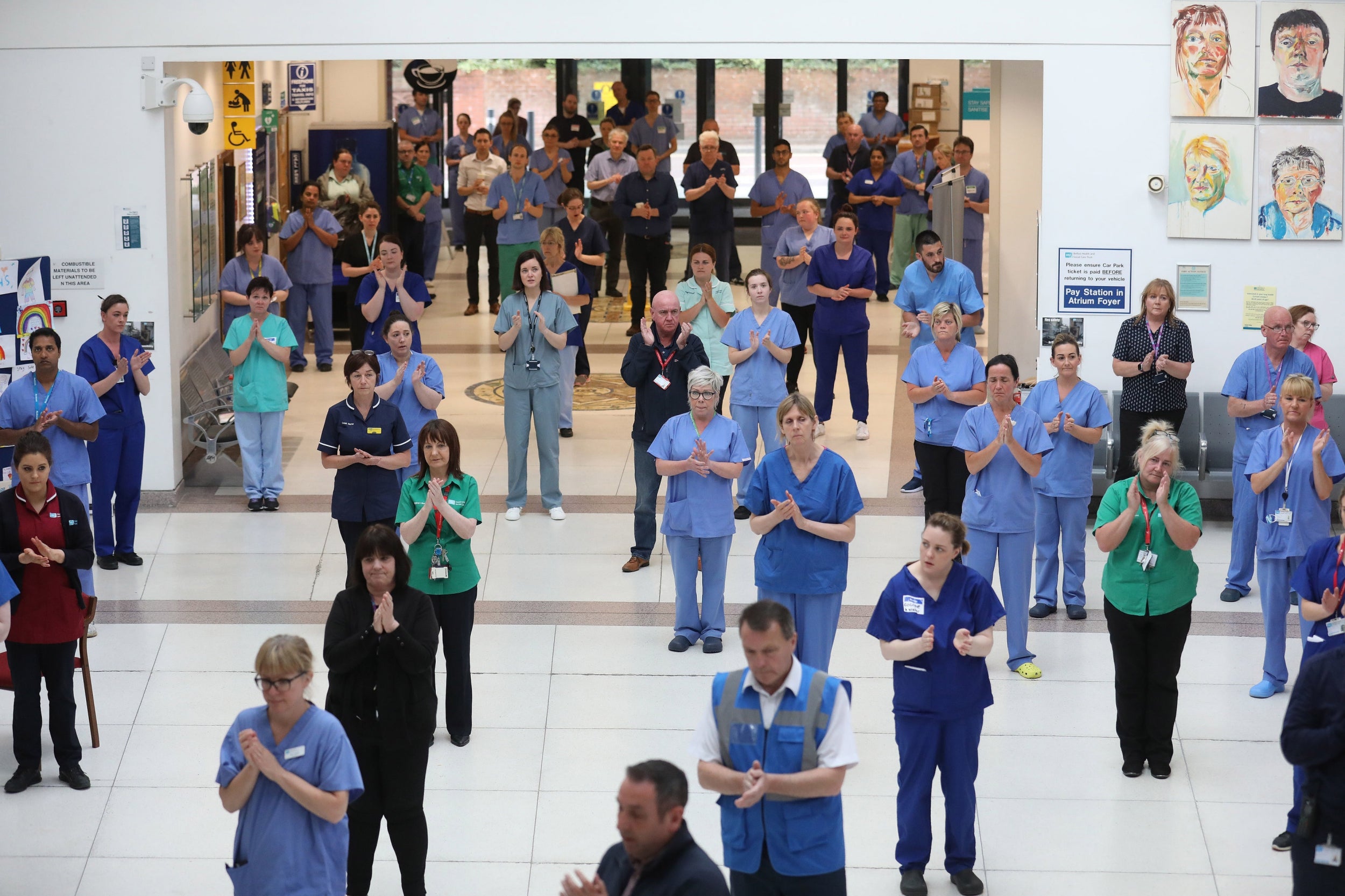
3/30
NHS staff at the Mater hospital in Belfast, during a minute’s silence to pay tribute to the NHS staff and key workers who have died during the coronavirus outbreak.
PA
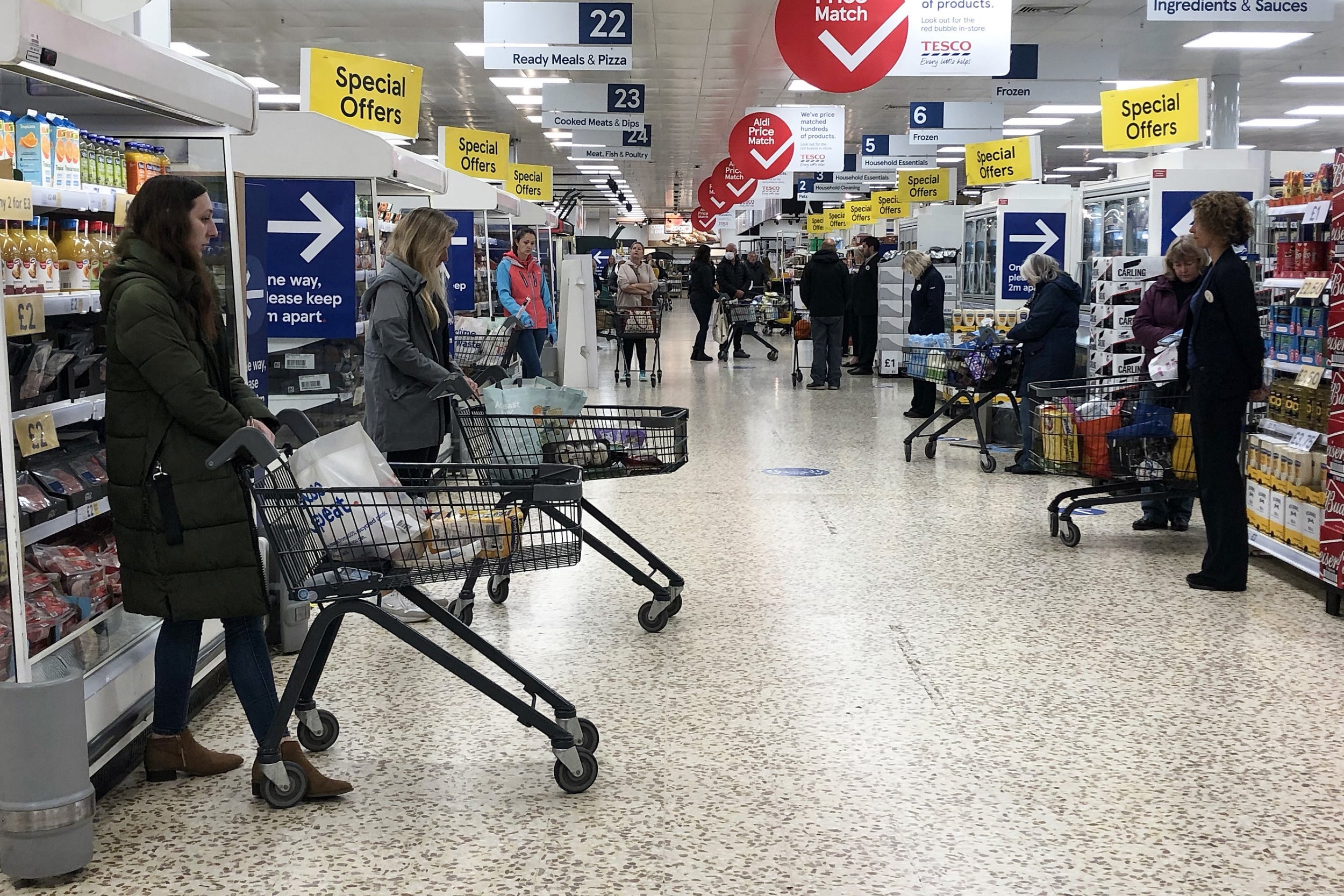
4/30
Shoppers observe a minute’s silence in Tescos in Shoreham
Getty
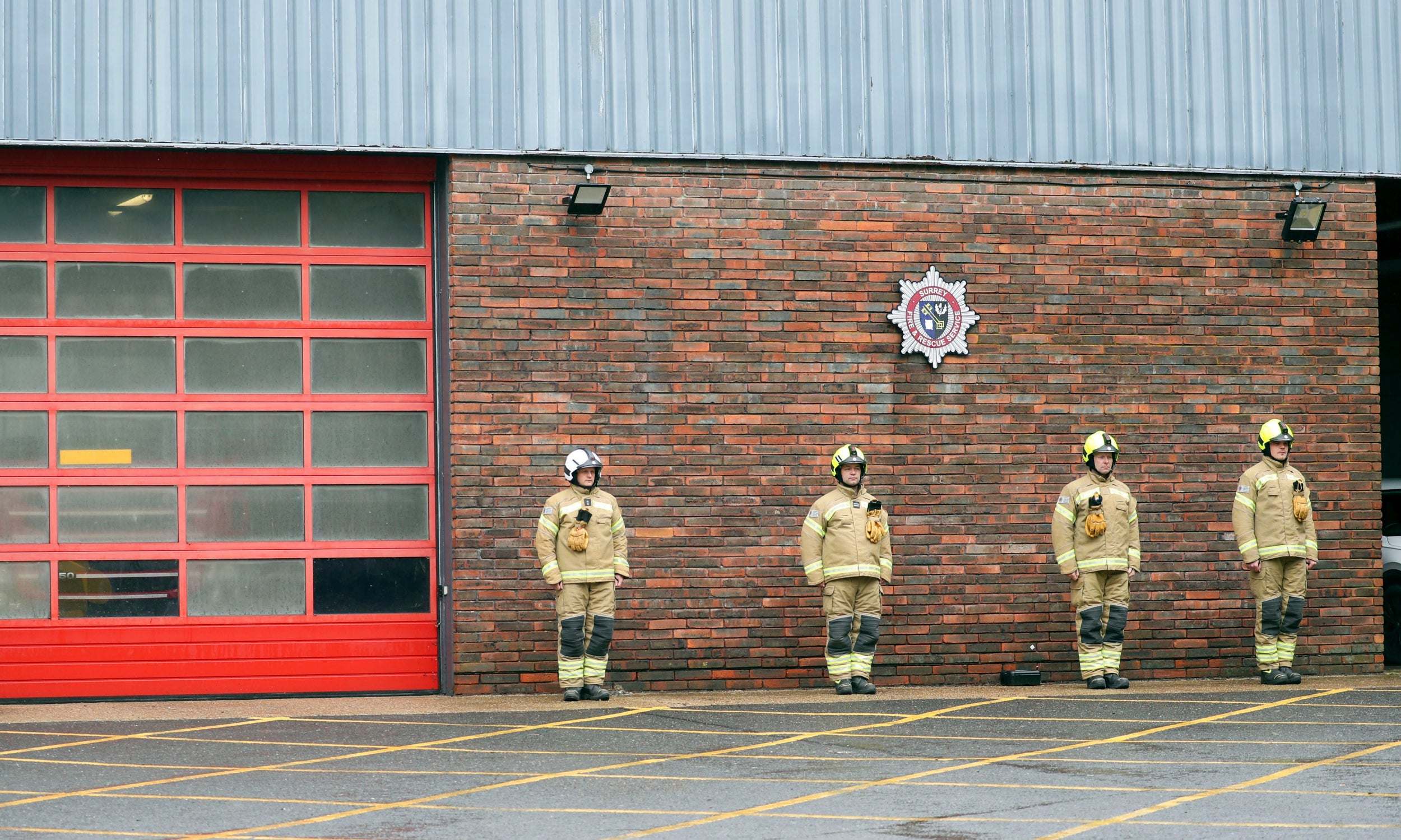
5/30
Firefighters outside Godstone fire station
PA
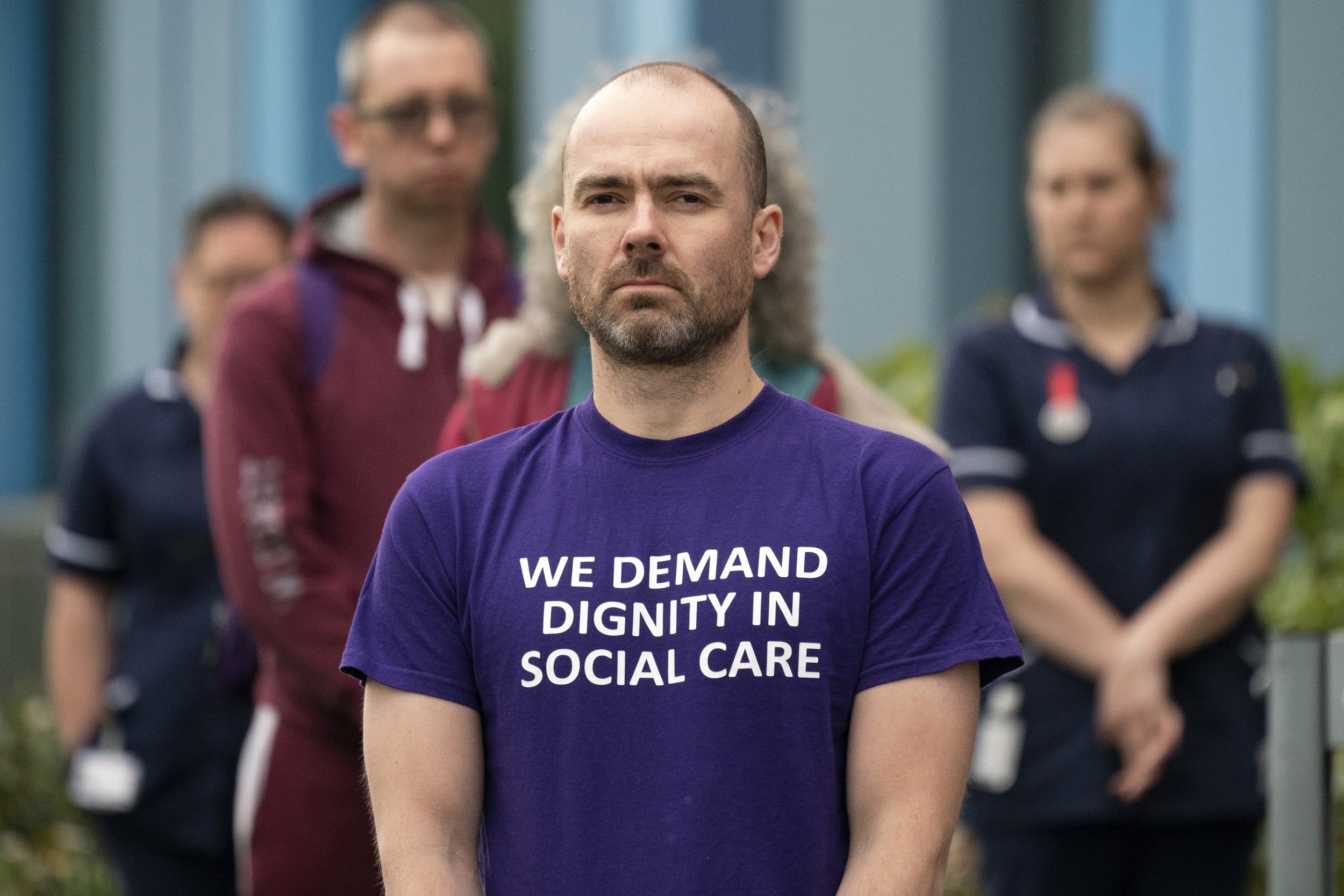
6/30 Salford Royal Hospital
Getty
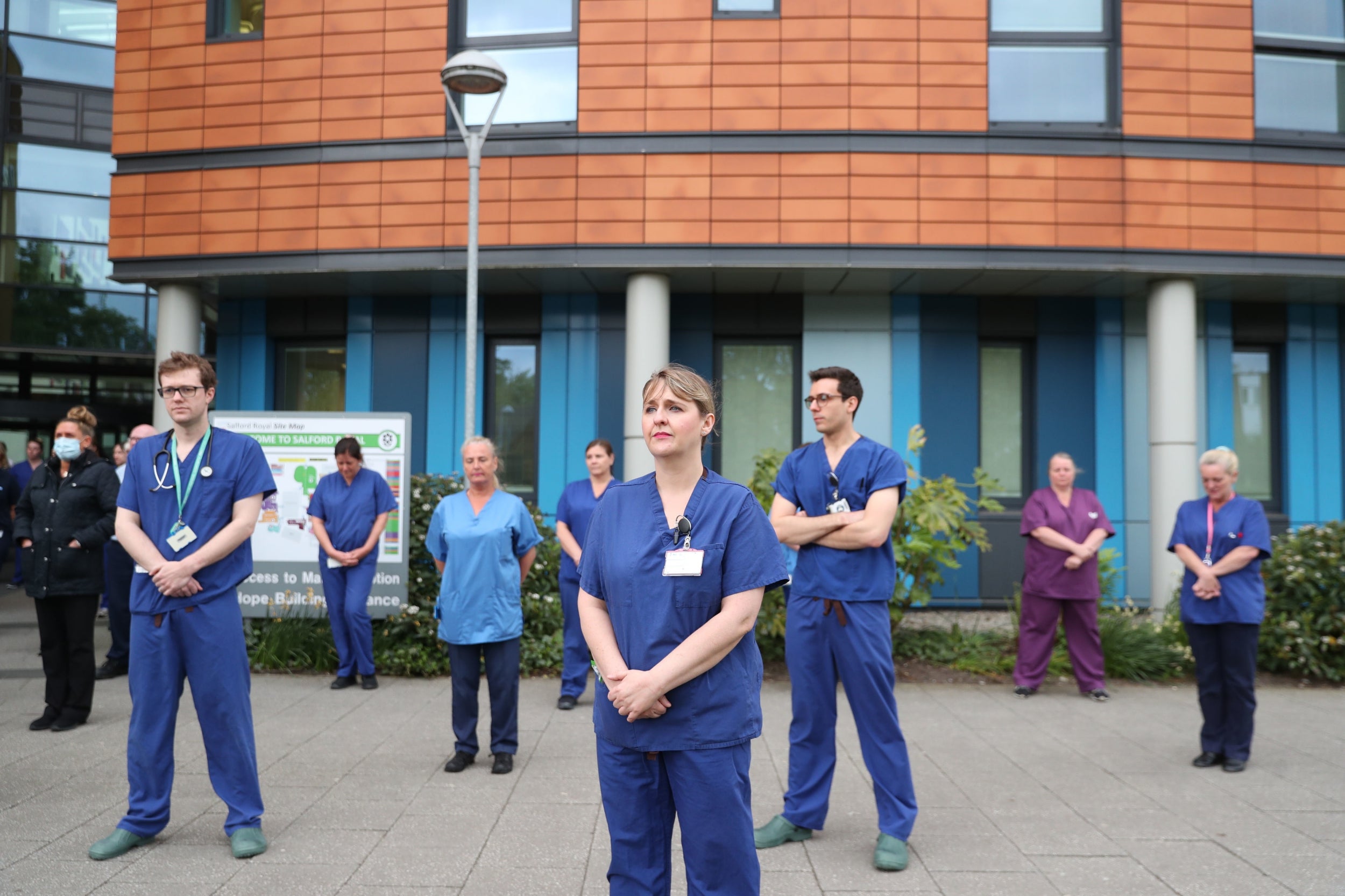
7/30 Salford Royal Hospital
PA
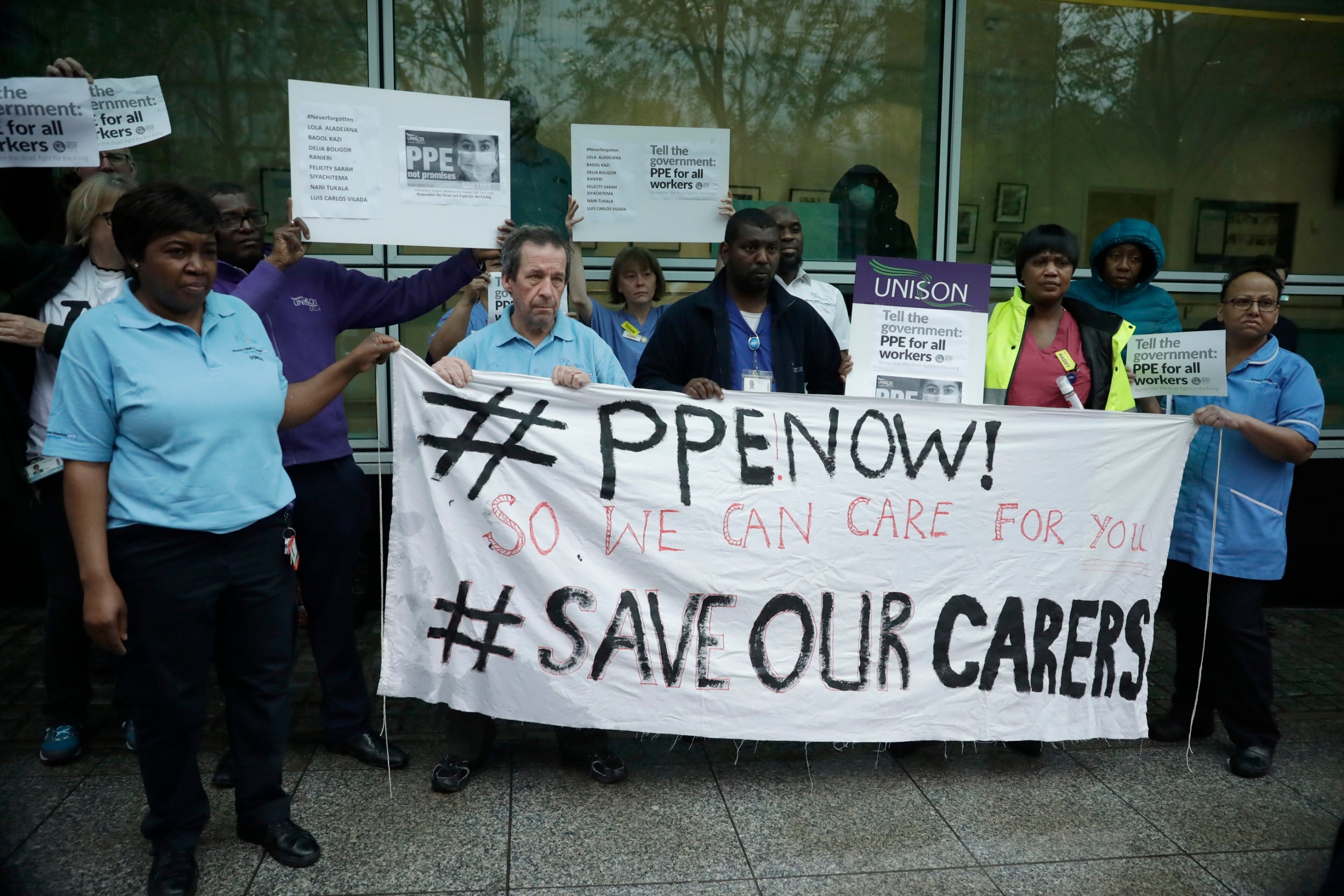
8/30
Hospital workers take part in a protest calling on the British government to provide PPE across Britain for all workers in care, the NHS and other vital public services after a nationwide minute’s silence at University College Hospital in London
AP
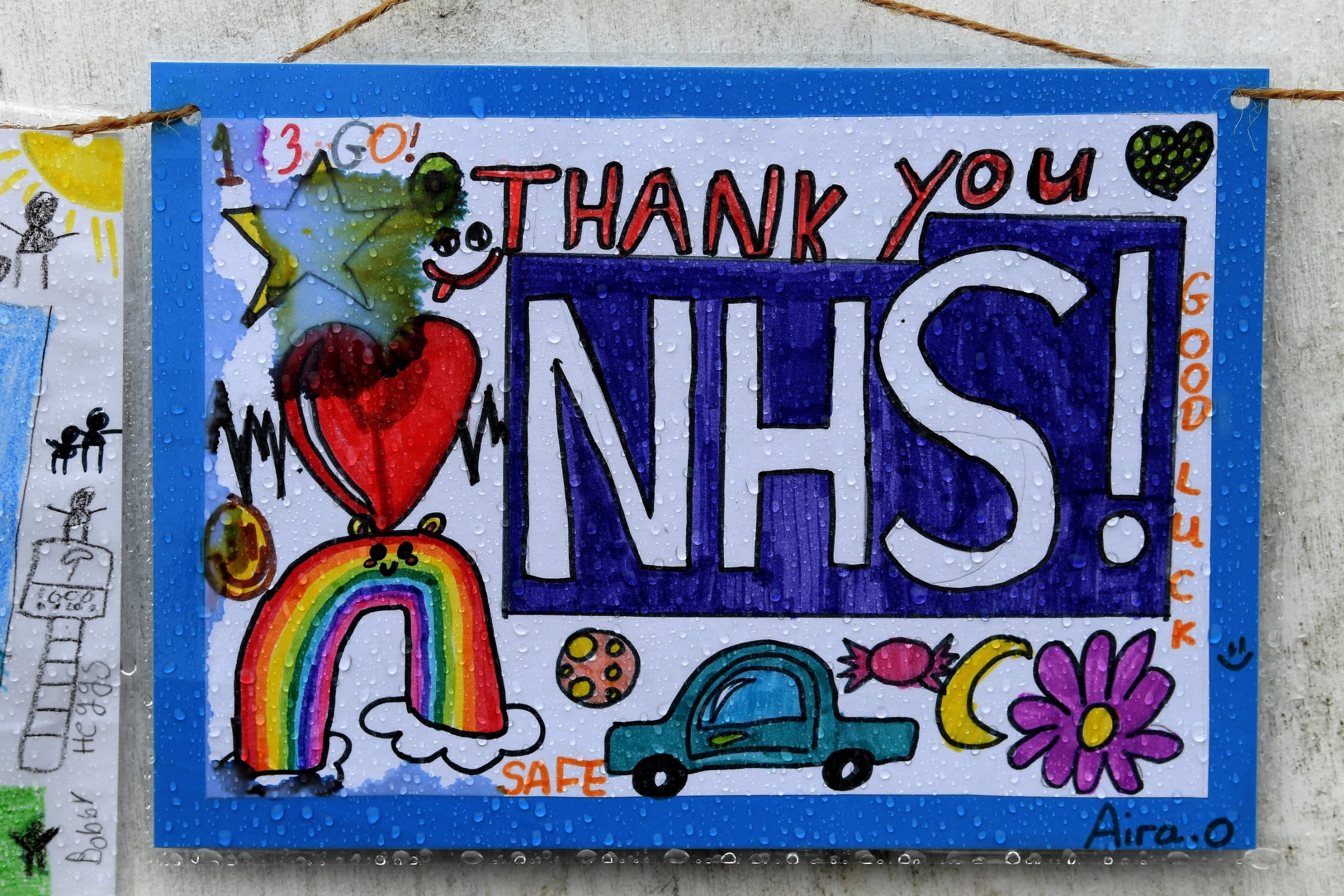
9/30
A school children’s poster hanging outside Glenfield Hospital during a minute’s silence
Getty
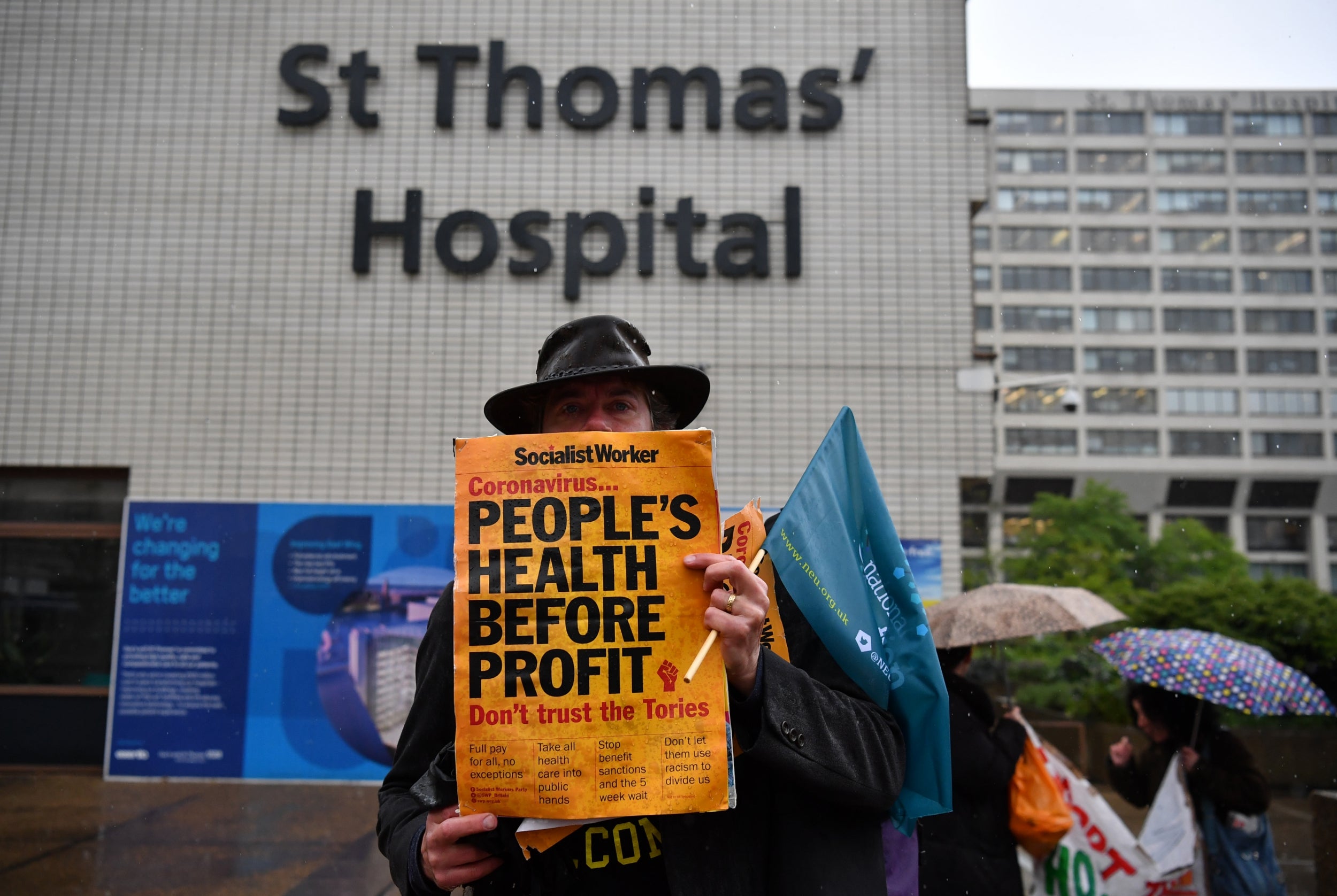
10/30
A man holds a placard that reads “People’s health before profit” outside St Thomas hospital
Getty
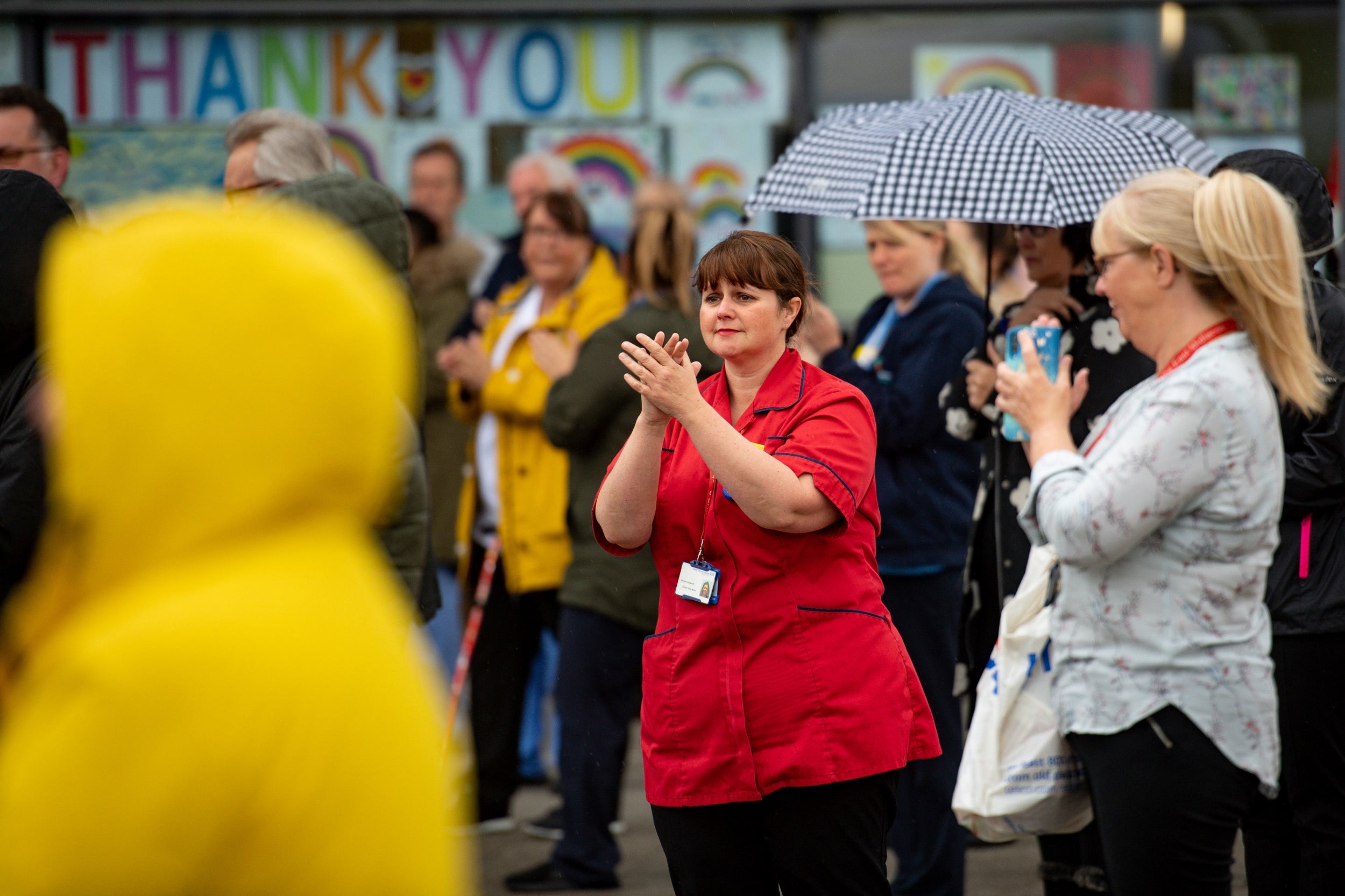
11/30
Staff members applaud outside the Royal Derby Hospital, following a minute’s silence
PA
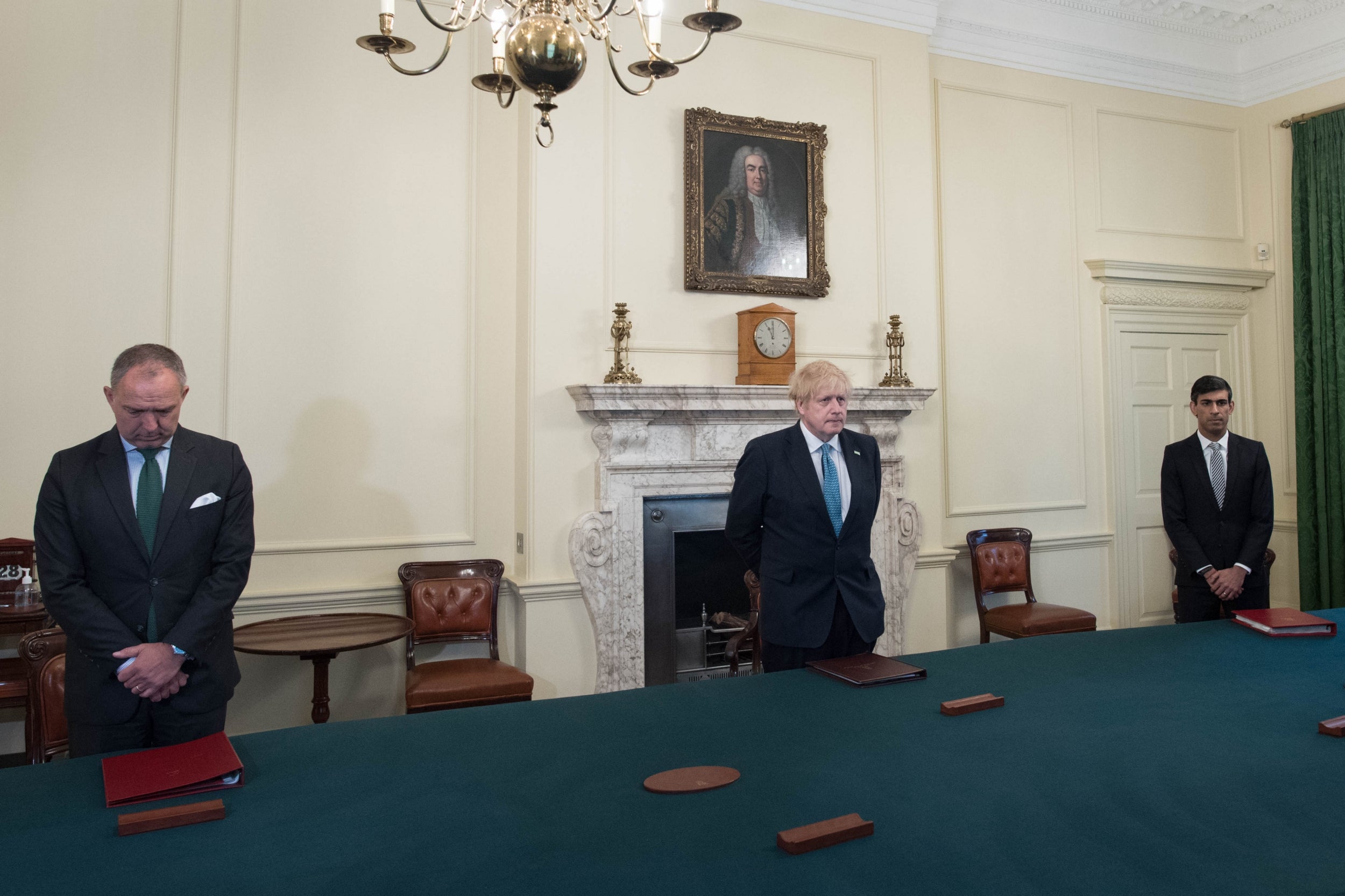
12/30
Cabinet Secretary Mark Sedwill, Prime minister Boris Johnson and Chancellor of the Exchequer Rishi Sunak, stand inside 10 Downing Street, London, to observe a minutes silence in tribute to the NHS staff and key workers who have died during the coronavirus outbreak
PA
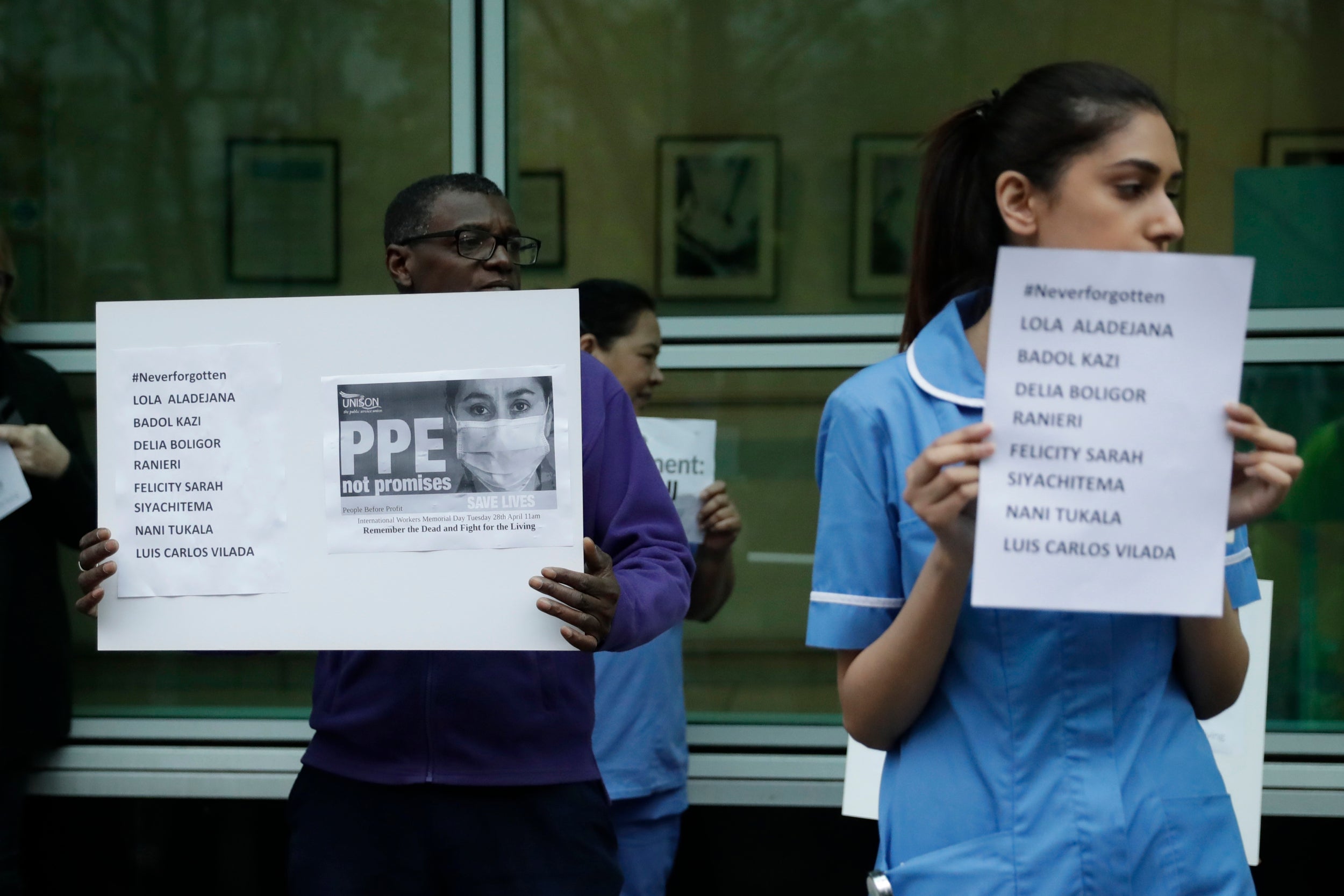
13/30 University College Hospital, London
Hospital workers hold placards with the names of their colleagues who have died from coronavirus as they take part in a protest calling on the British government to provide PPE
AP
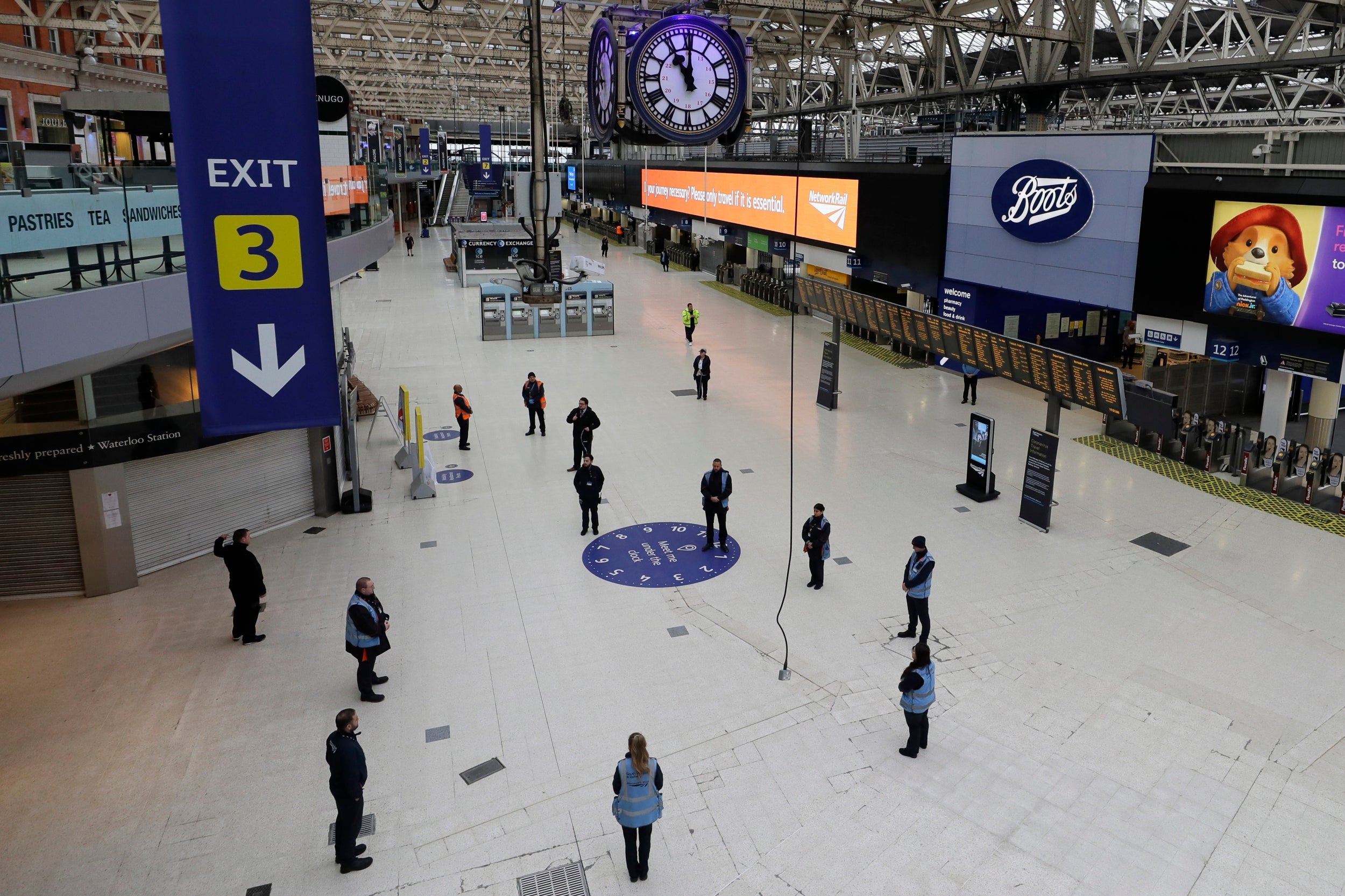
14/30
Staff at Waterloo Station in London, stand to observe a minute’s silence, to pay tribute to NHS and key workers who have died with coronavirus
AP
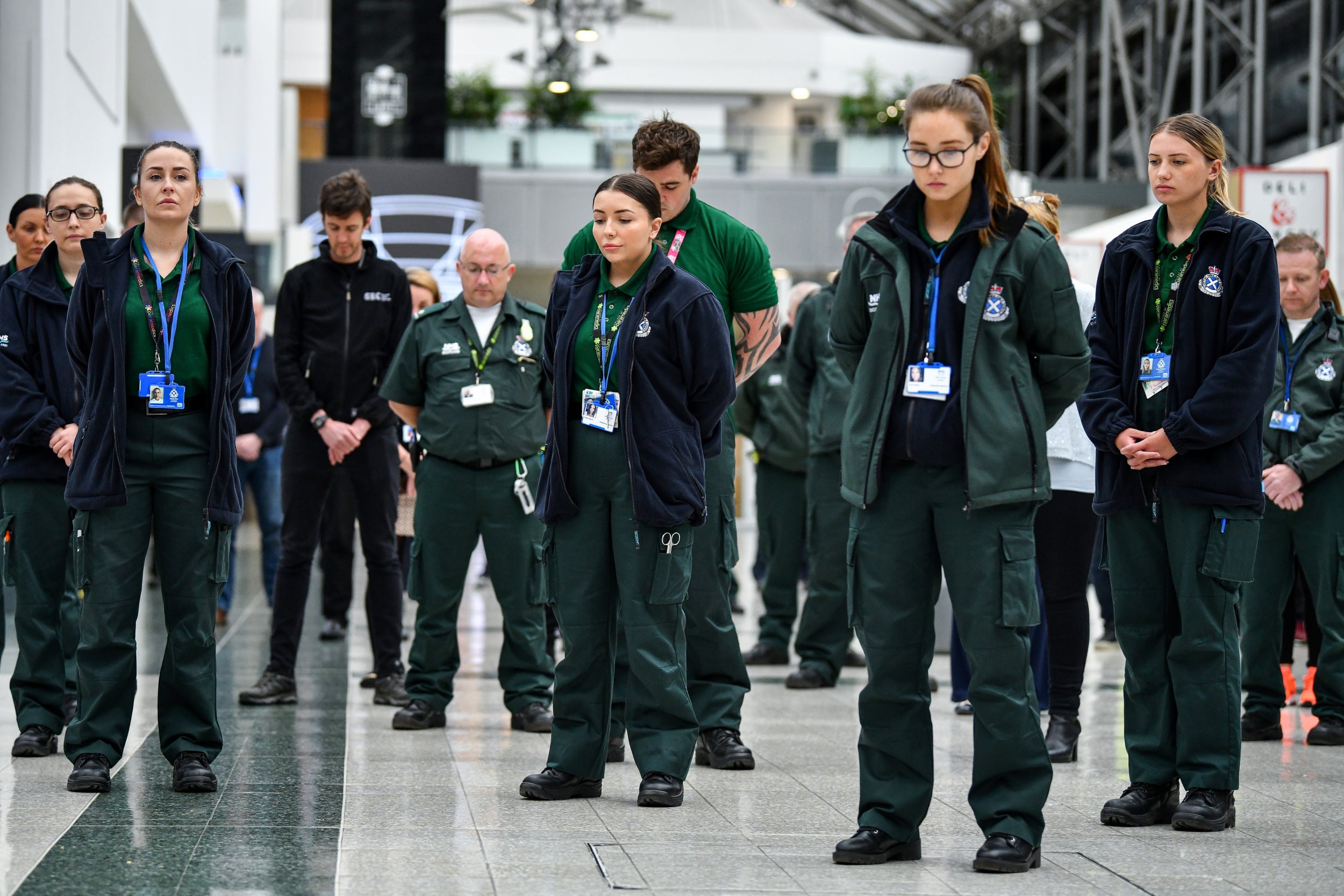
15/30
Medical staff at the Louisa Jordan hospital stand during a UK wide minutes silence to commemorate the key workers who have died with coronavirus in Glasgow
Getty
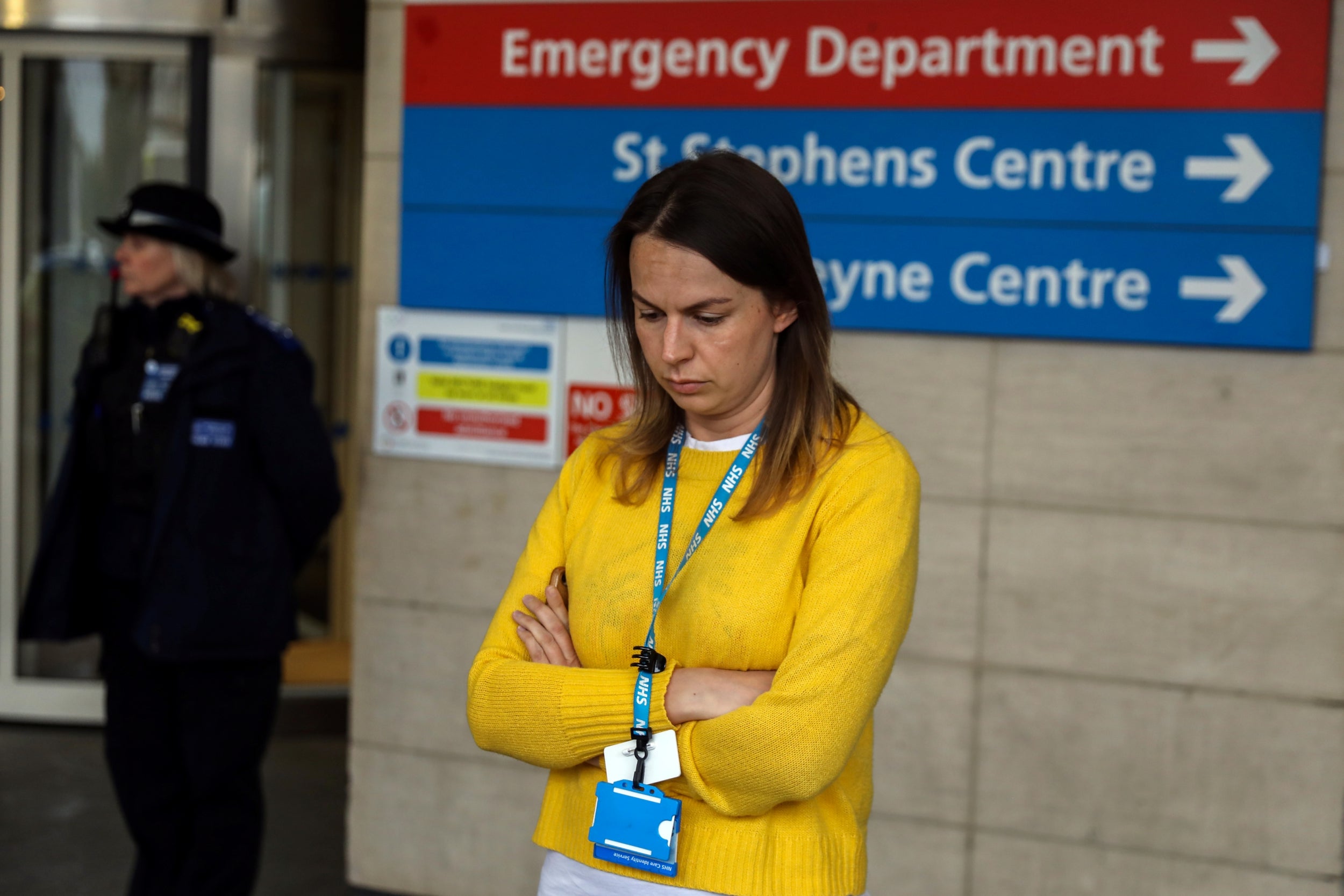
16/30 London
An NHS worker observes a minute’s silence at Chelsea and Westminster Hospital
Reuters
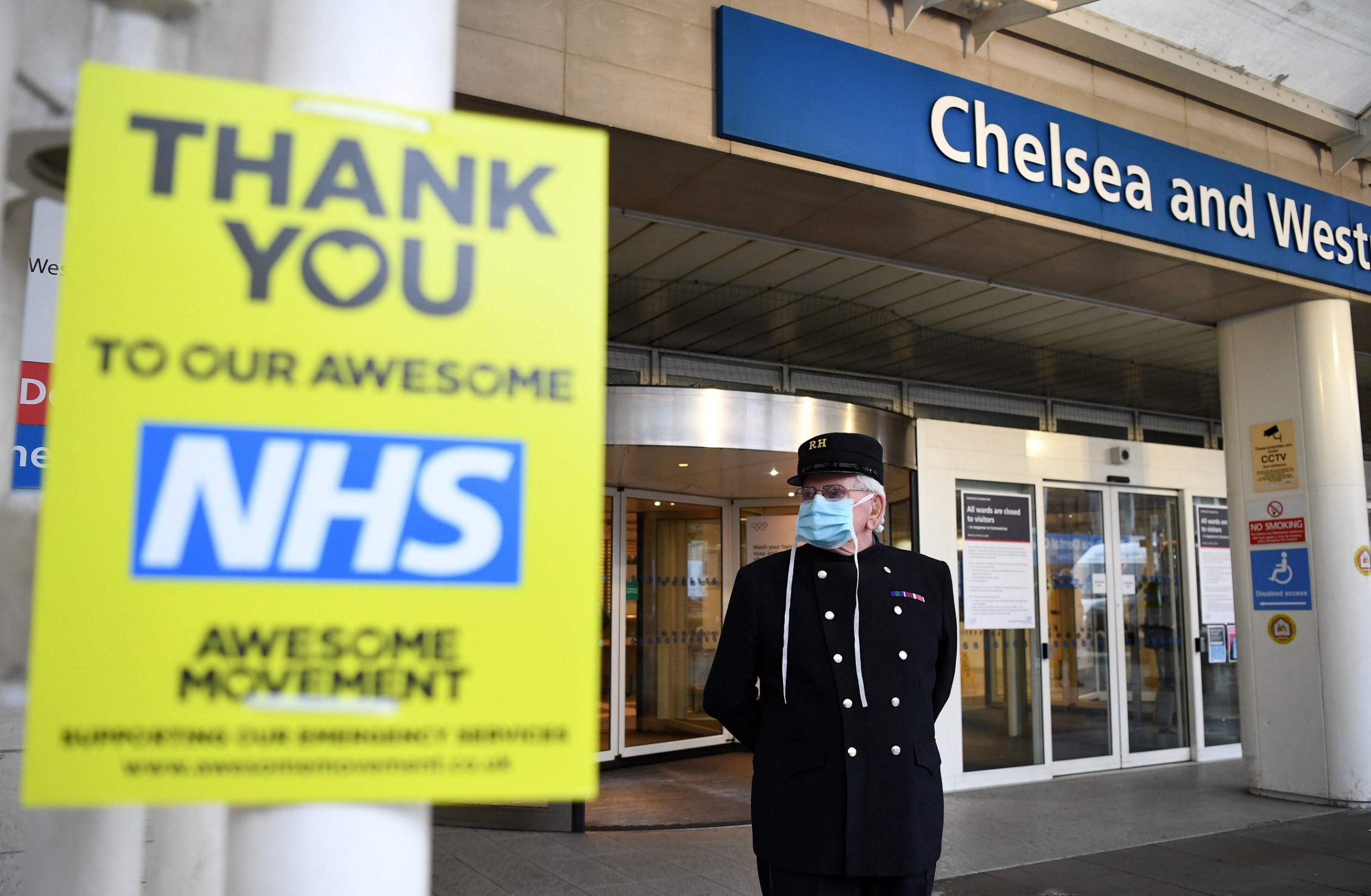
17/30 Chelsea and Westminster Hospital in London
AFP via Getty
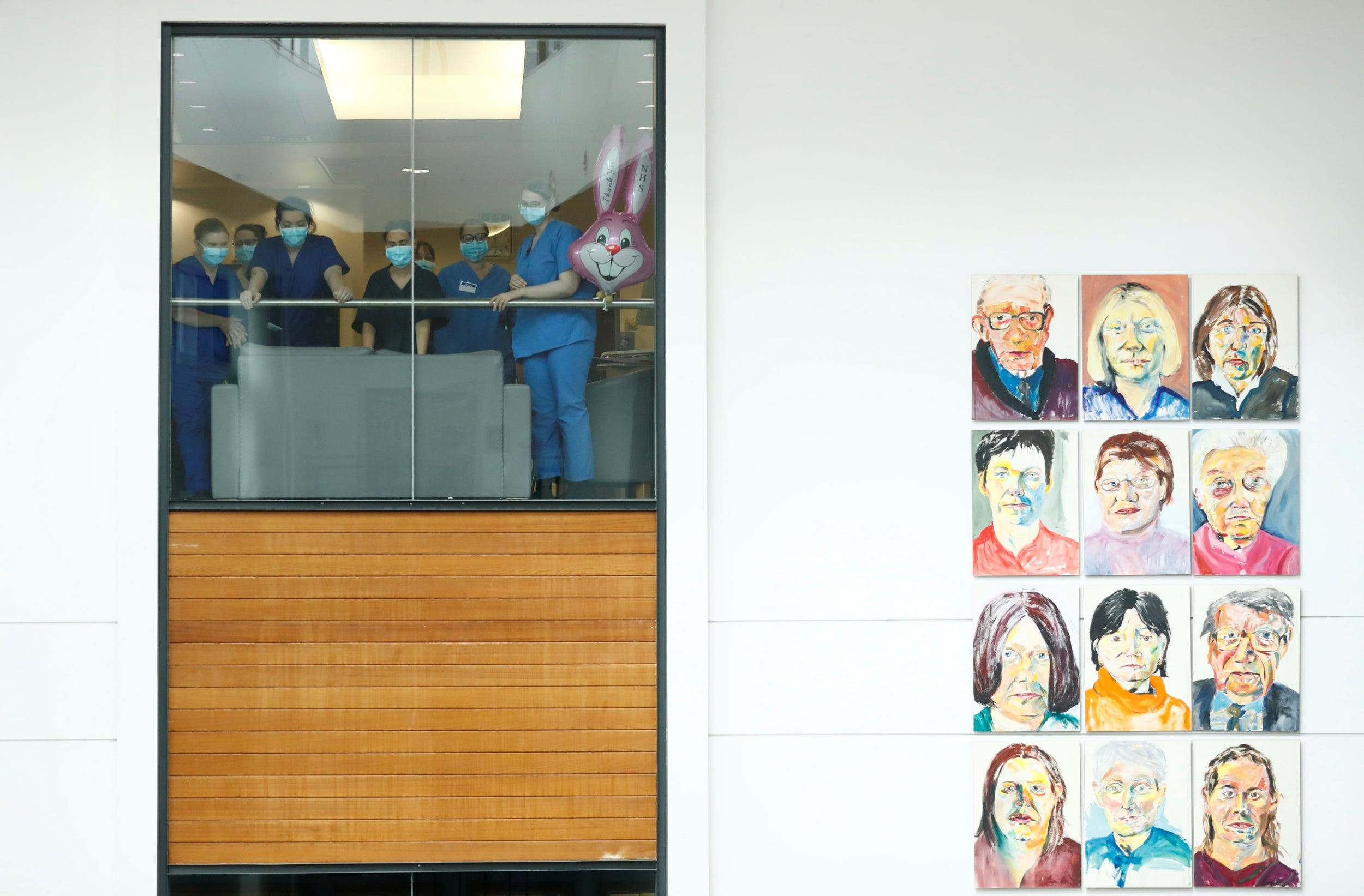
18/30 Belfast, Northern Ireland
NHS staff observe a minutes silence at Mater Infirmorum Hospital
Reuters
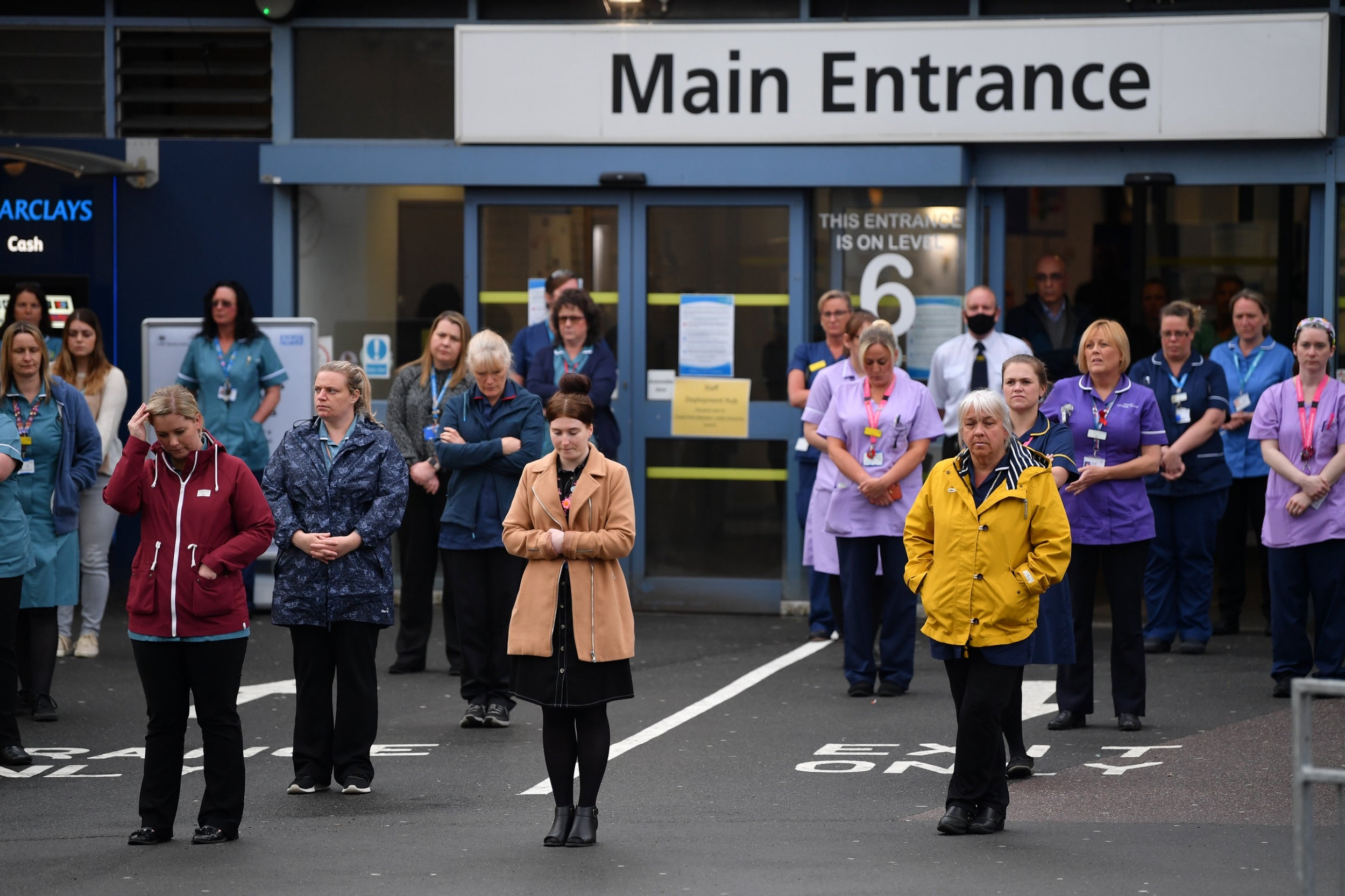
19/30 Plymouth
NHS workers hold a minute’s silence outside the main entrance of Derriford Hospital
Getty
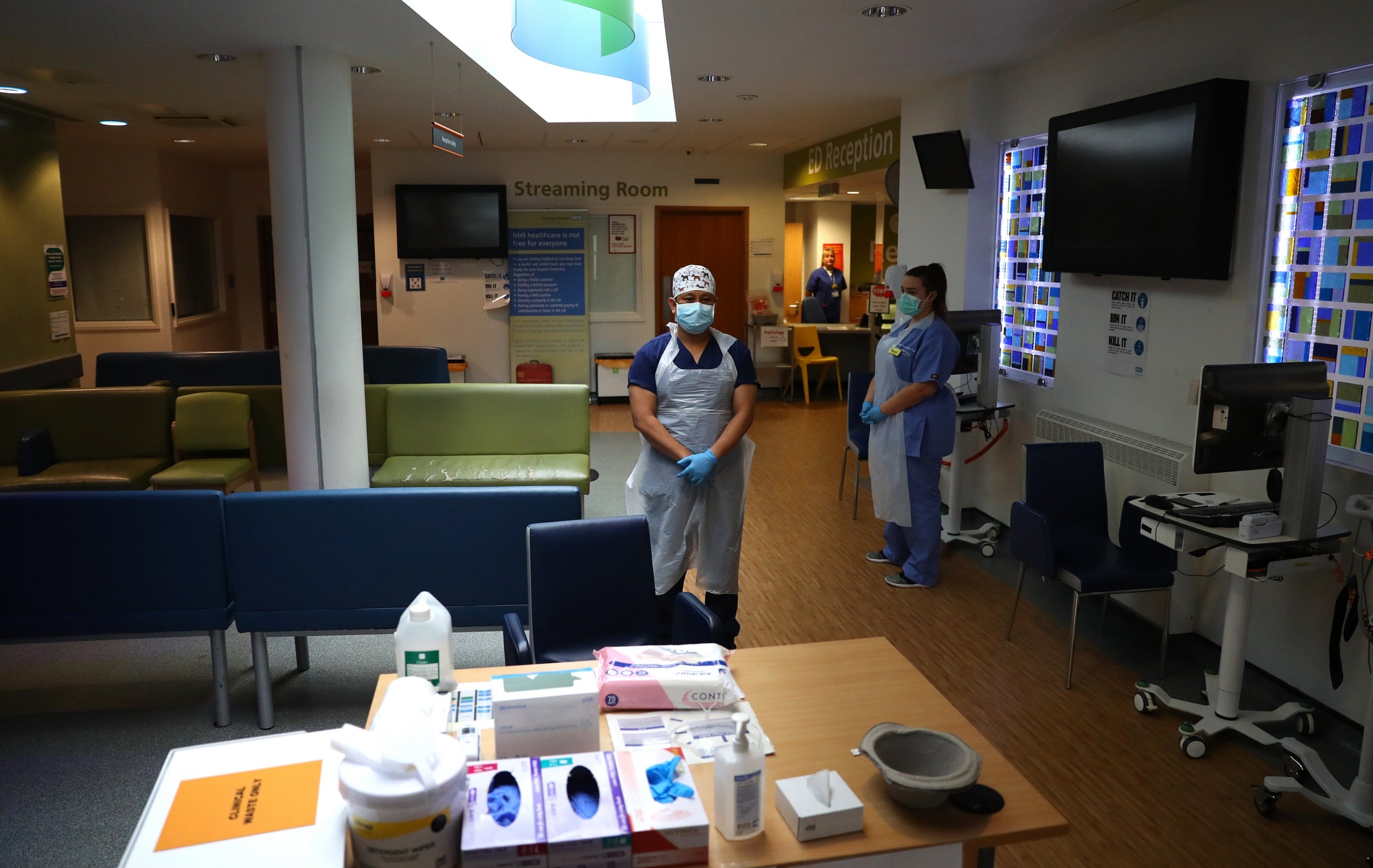
20/30
NHS Frimley Park Hospital staff at the A&E department observe a minute’s silence
Getty
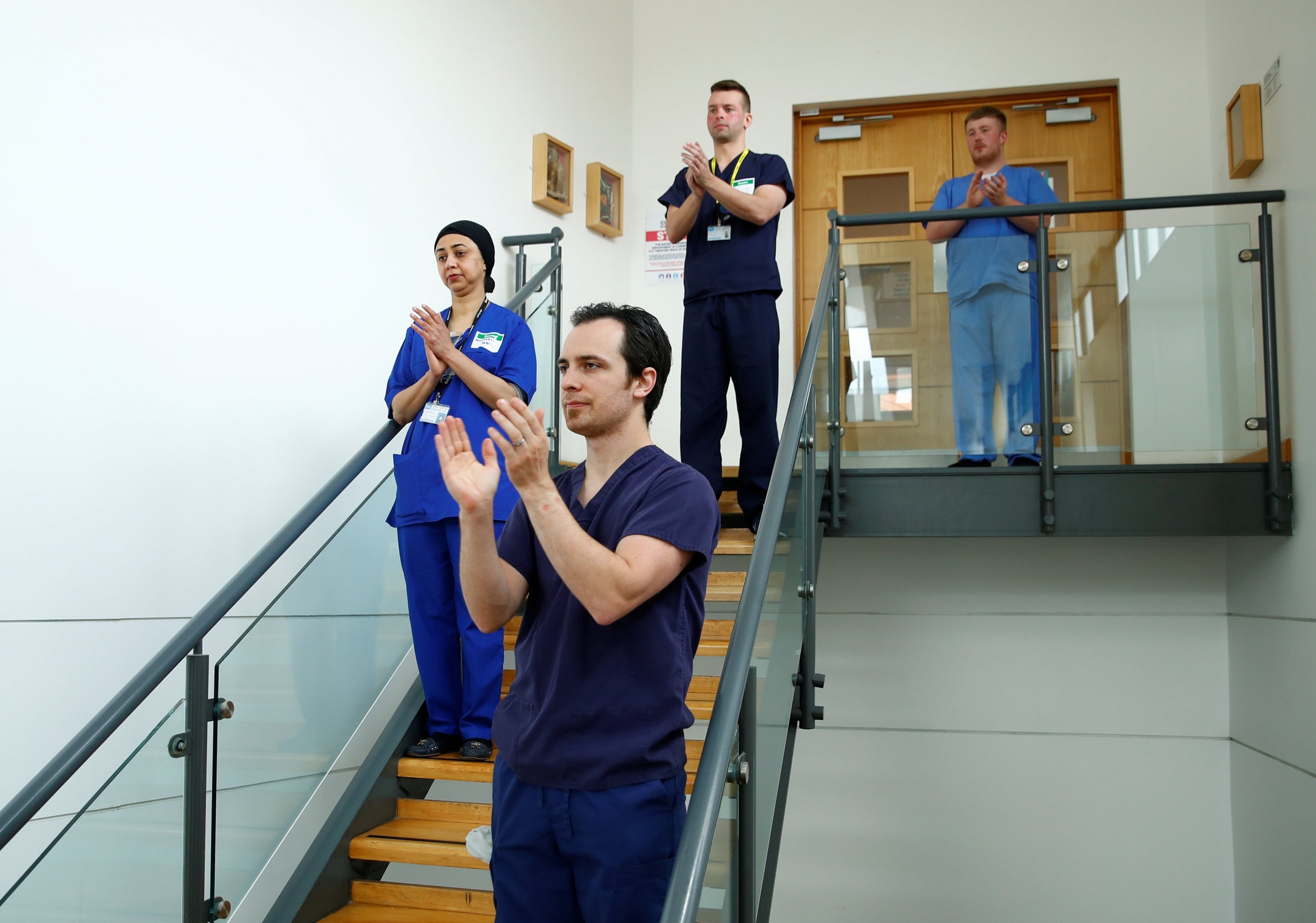
21/30 Mater Infirmorum Hospital
People applaud after a minutes silence in honour of key workers
Reuters
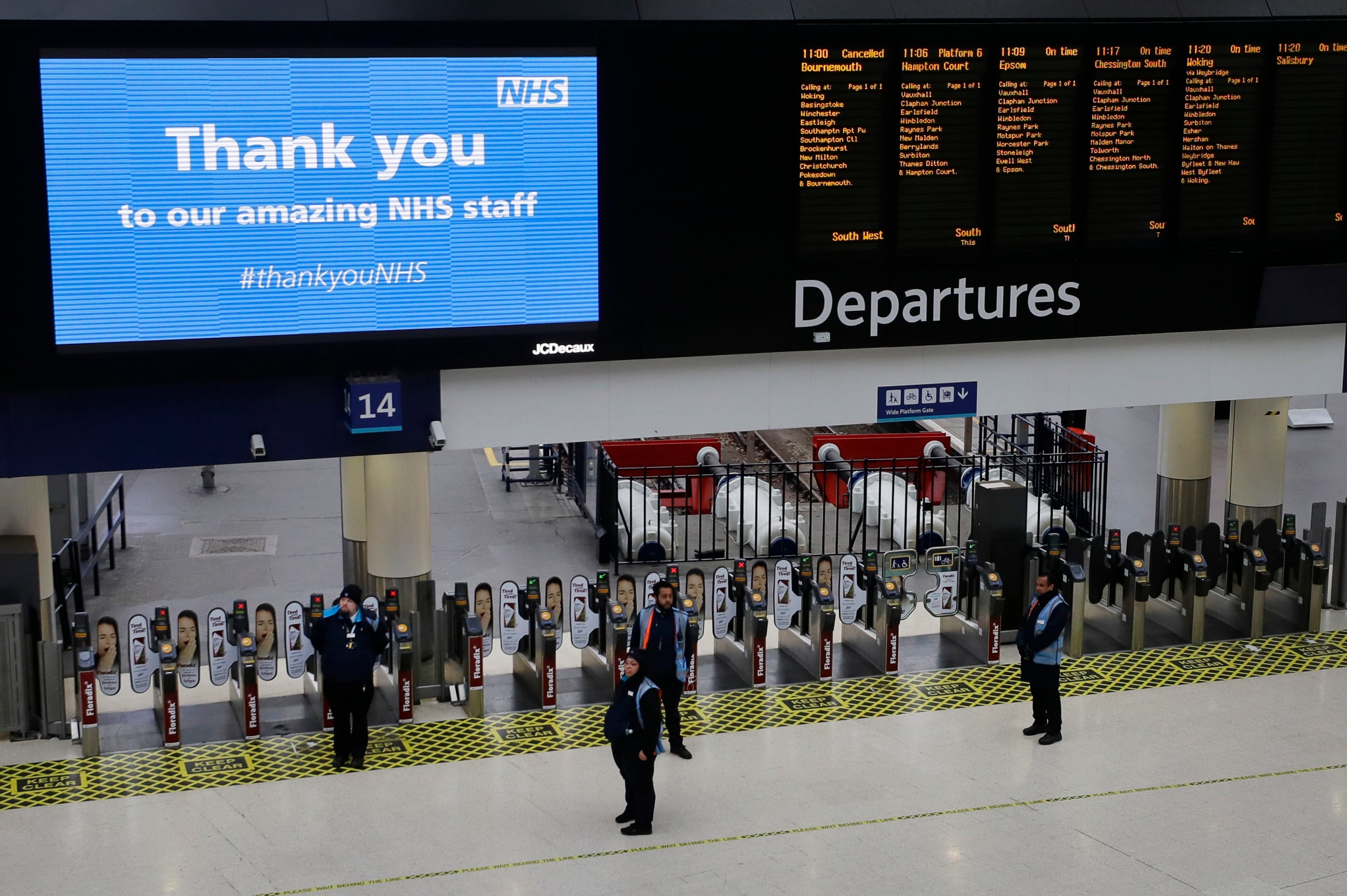
22/30 Waterloo Station, London
AP
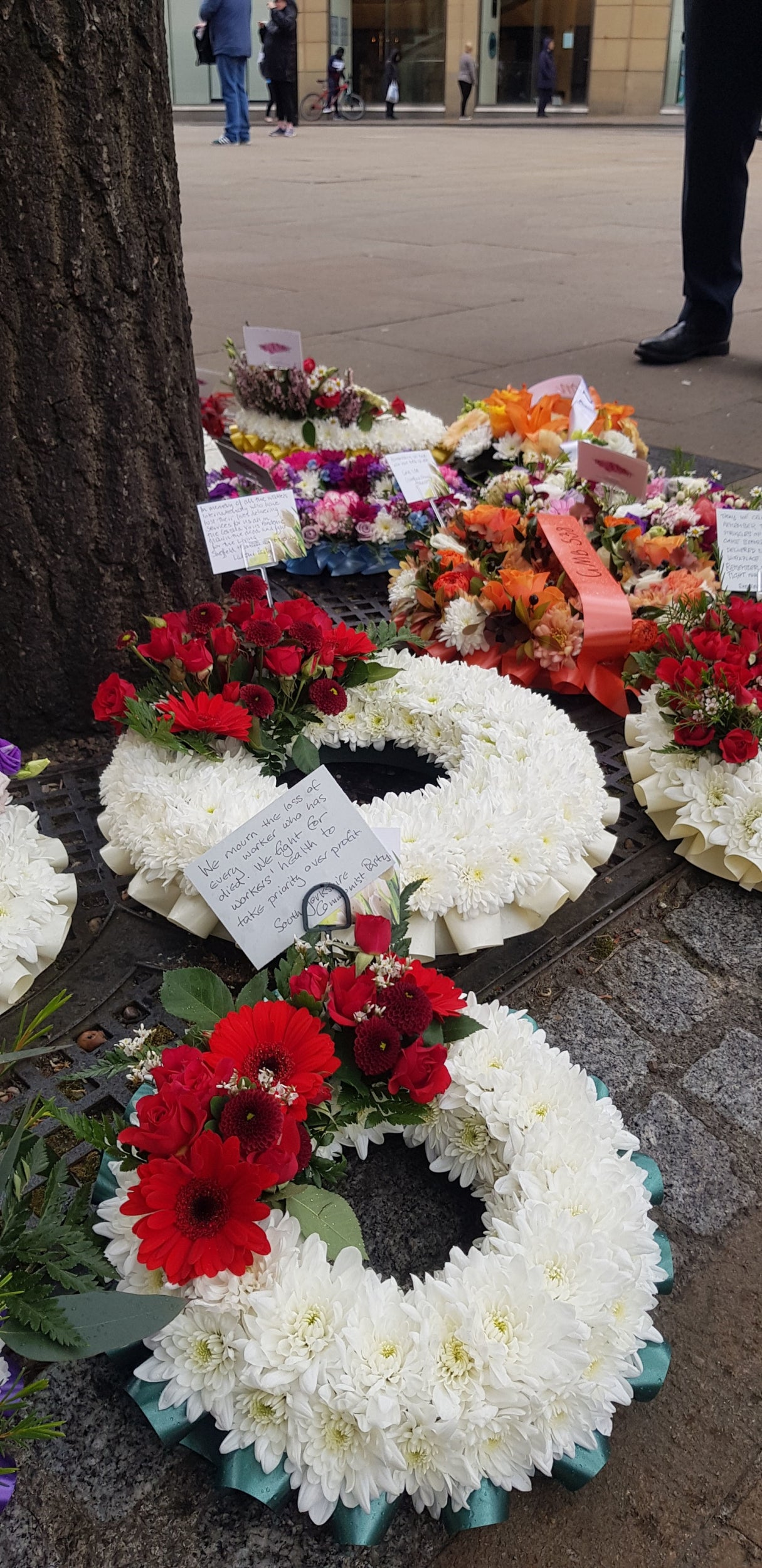
23/30
Wreaths laid outside Sheffield town hall
PA
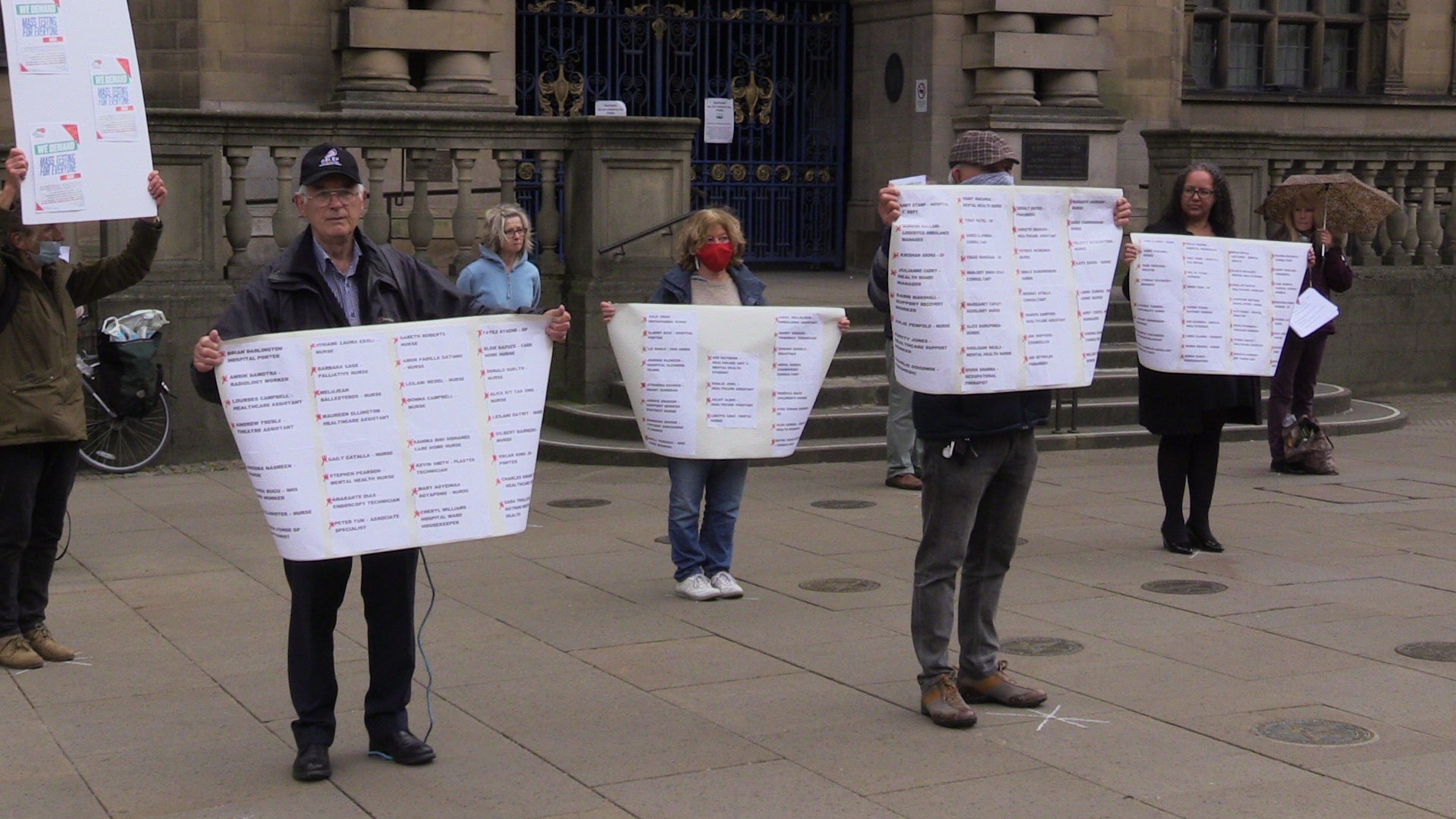
24/30
A group of trade unionists and supporters standing outside Sheffield town hall
PA
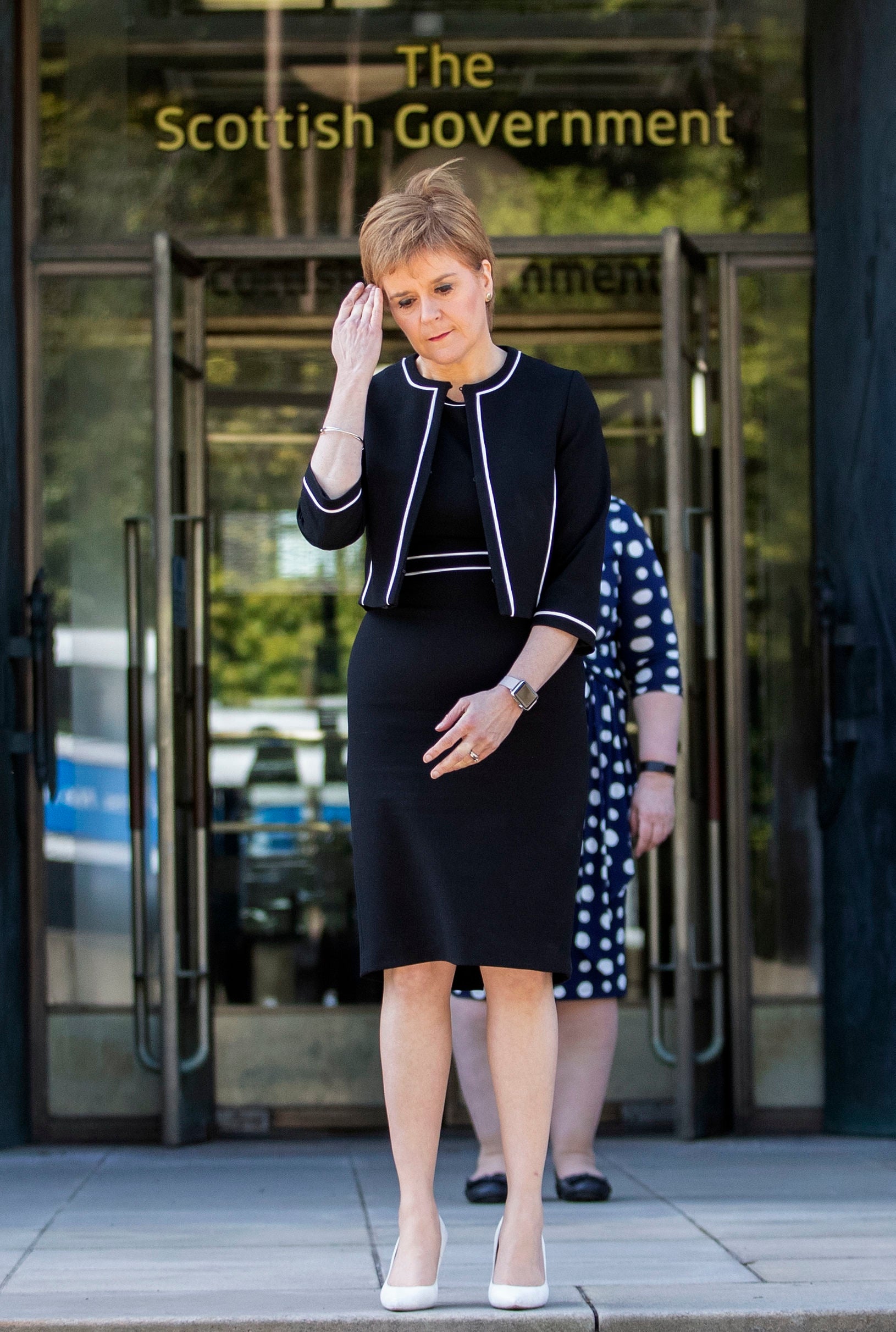
25/30
First Minister Nicola Sturgeon stands outside St Andrew’s House in Edinburgh to observe a minute’s silence in tribute to the NHS staff and key workers who have died during the coronavirus outbreak
PA
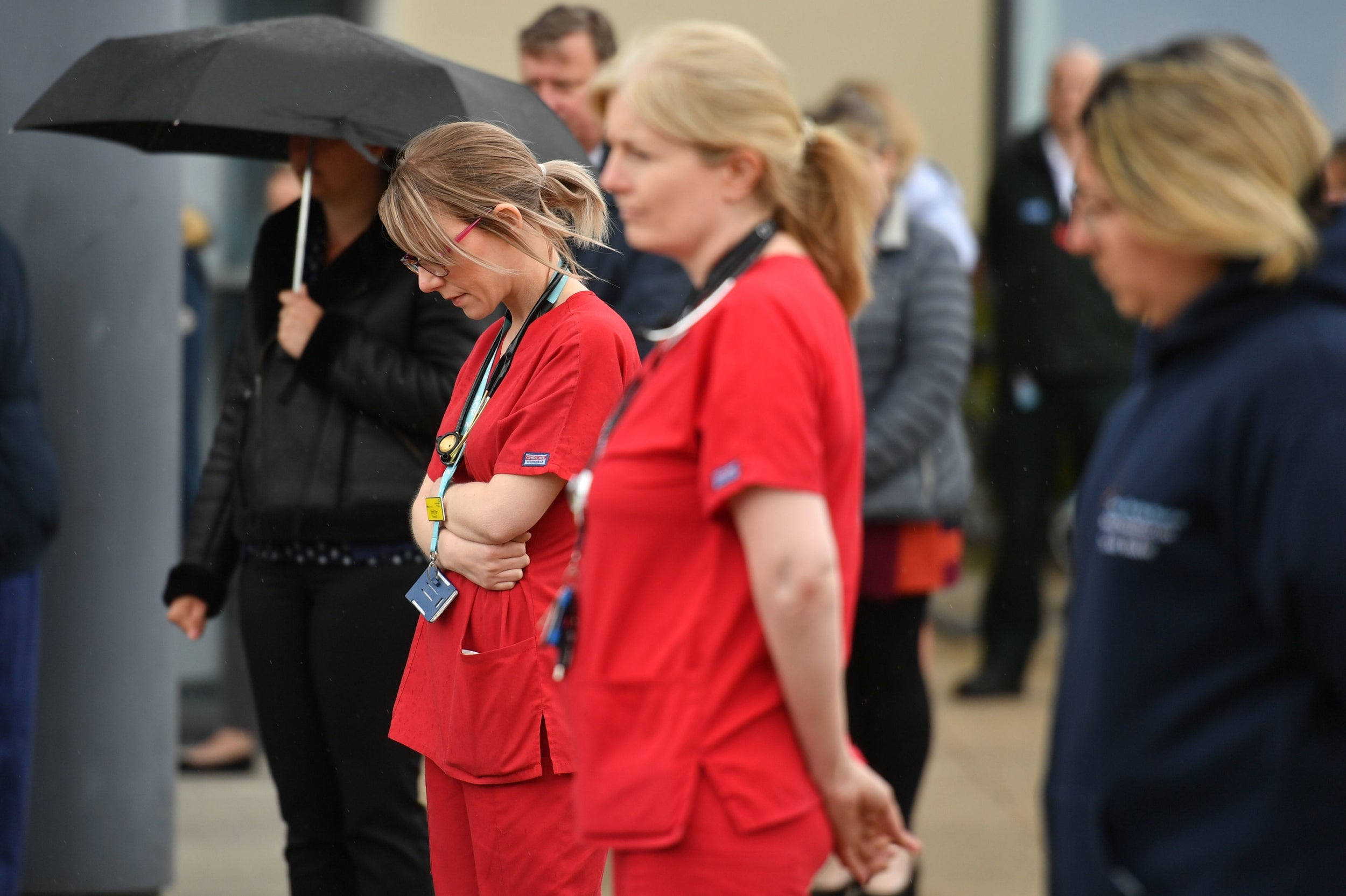
26/30
Staff stand outside the Royal Derby Hospital, during a minutes silence
PA
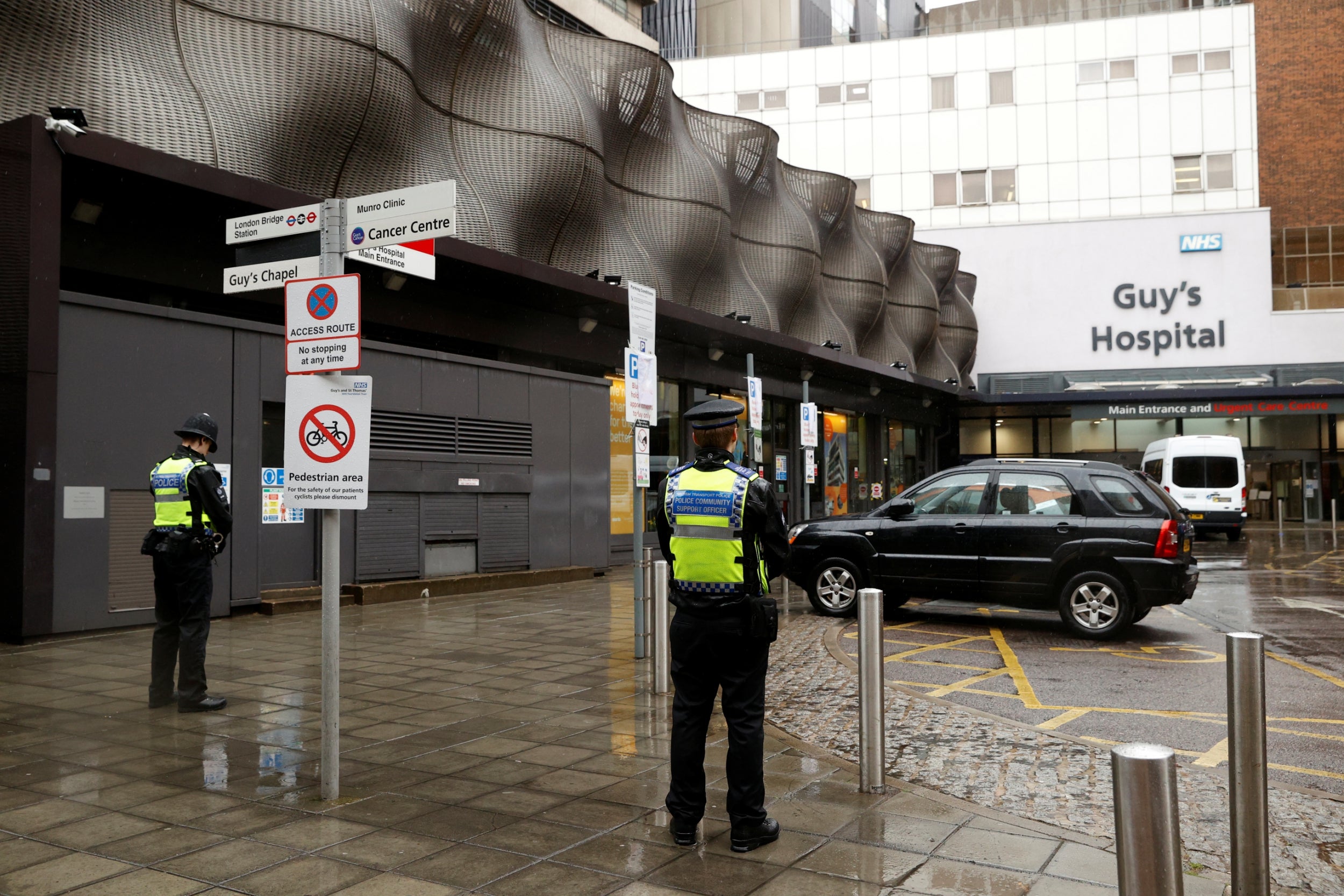
27/30 London
Police officers observe a minutes silence at Guy’s Hospital
Reuters
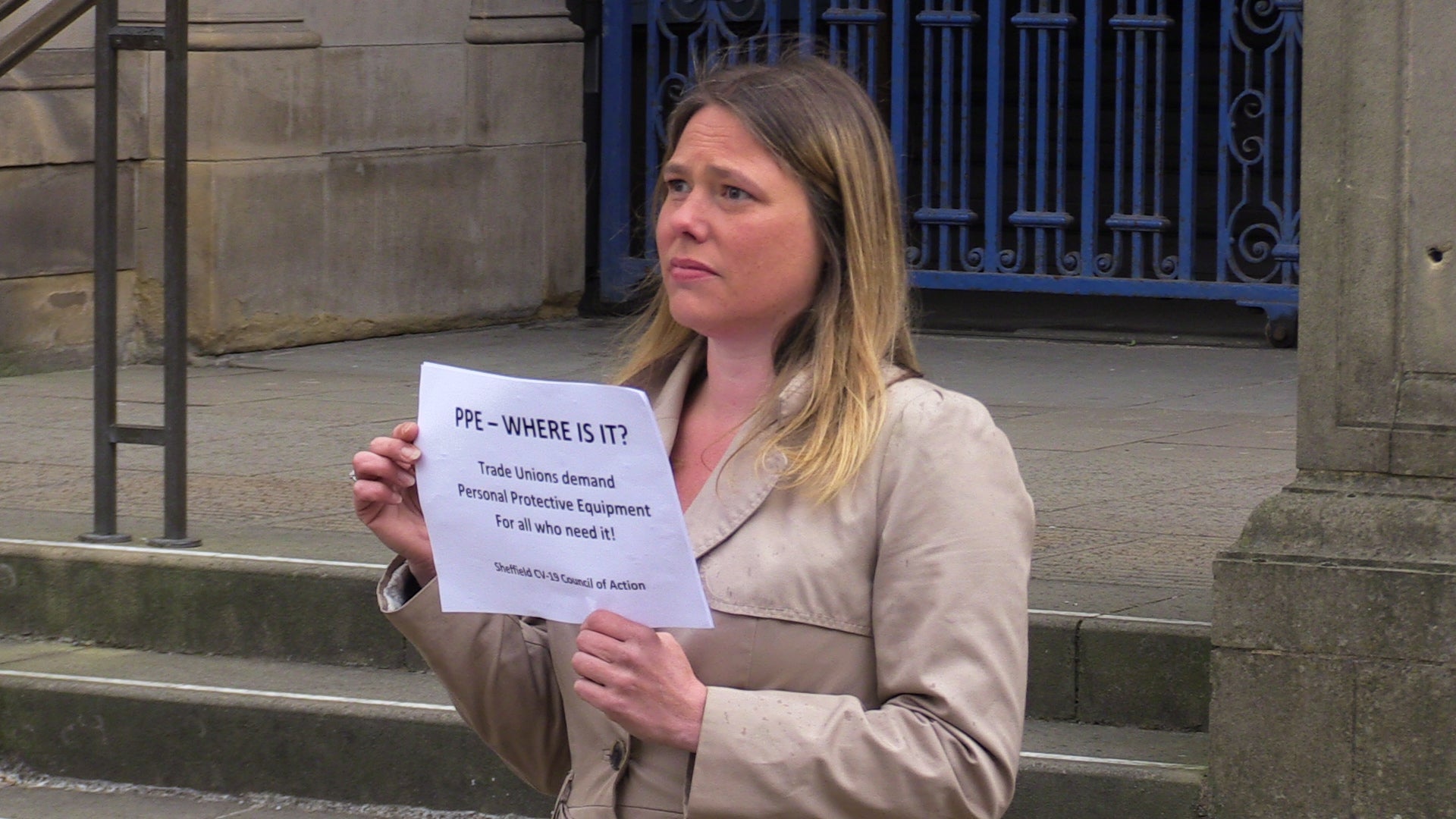
28/30
A woman standing outside Sheffield town hall
PA
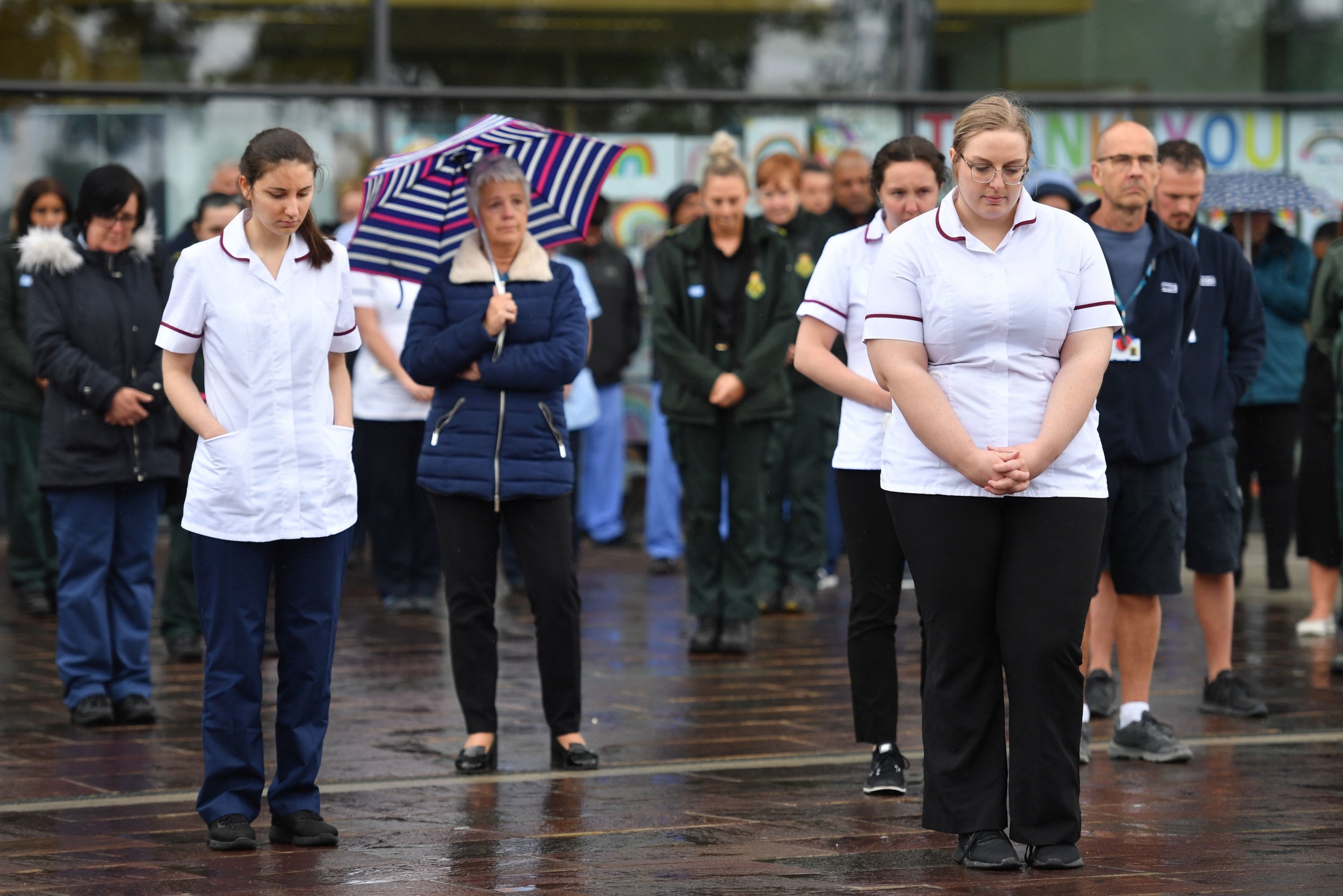
29/30 Royal Derby Hospital
PA
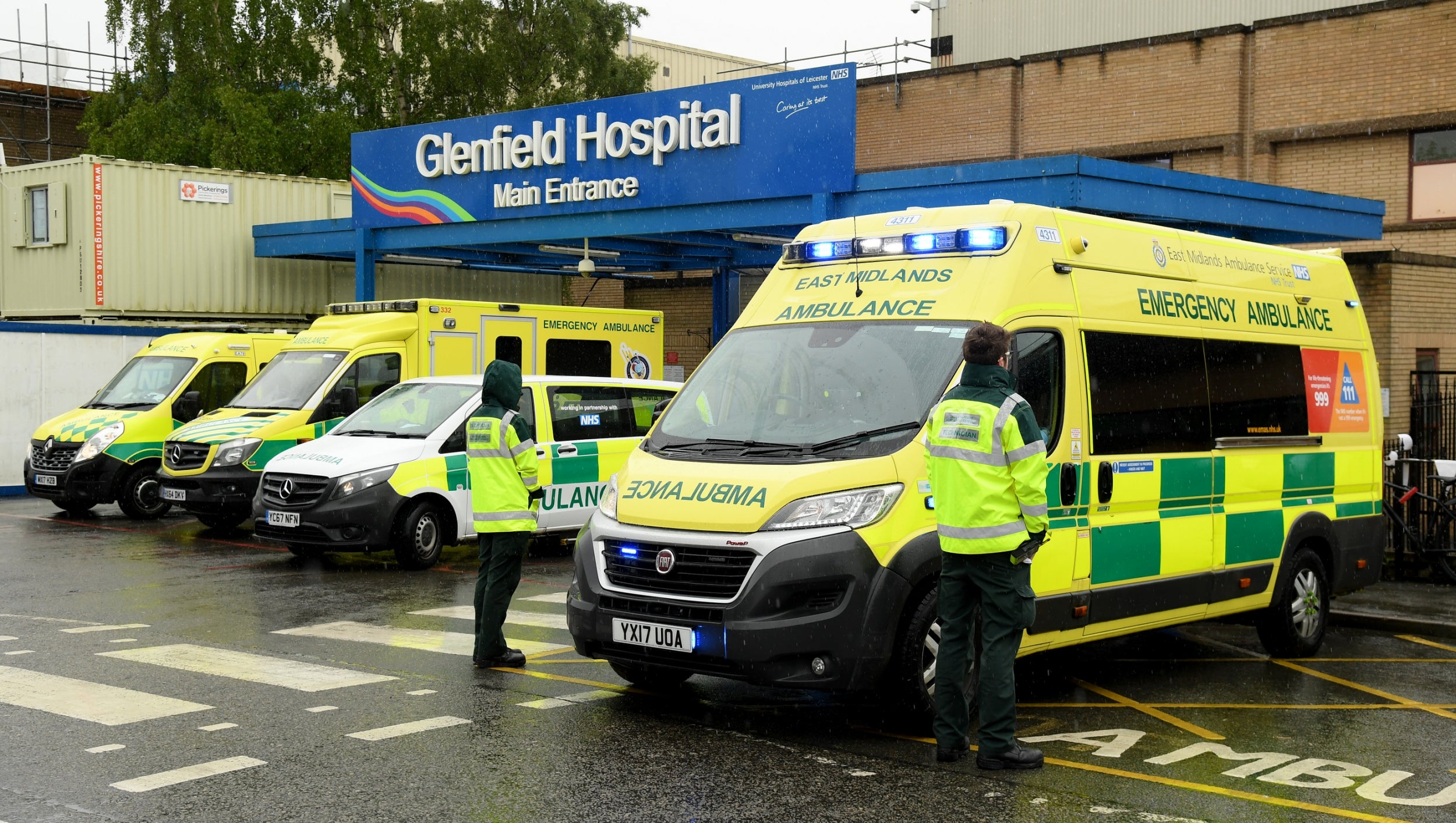
30/30 Leicester,
NHS workers during a minute’s silence outside Glenfield Hospital
Getty

1/30
Staff react outside Salford Royal Hospital in Manchester during a minute’s silence to pay tribute to the NHS staff and key workers who have died during the coronavirus outbreak
PA

2/30
Staff inside Camberwell bus depot in London, during a minute’s silence
PA

3/30
NHS staff at the Mater hospital in Belfast, during a minute’s silence to pay tribute to the NHS staff and key workers who have died during the coronavirus outbreak.
PA

4/30
Shoppers observe a minute’s silence in Tescos in Shoreham
Getty

5/30
Firefighters outside Godstone fire station
PA

6/30 Salford Royal Hospital
Getty

7/30 Salford Royal Hospital
PA

8/30
Hospital workers take part in a protest calling on the British government to provide PPE across Britain for all workers in care, the NHS and other vital public services after a nationwide minute’s silence at University College Hospital in London
AP

9/30
A school children’s poster hanging outside Glenfield Hospital during a minute’s silence
Getty

10/30
A man holds a placard that reads “People’s health before profit” outside St Thomas hospital
Getty

11/30
Staff members applaud outside the Royal Derby Hospital, following a minute’s silence
PA

12/30
Cabinet Secretary Mark Sedwill, Prime minister Boris Johnson and Chancellor of the Exchequer Rishi Sunak, stand inside 10 Downing Street, London, to observe a minutes silence in tribute to the NHS staff and key workers who have died during the coronavirus outbreak
PA

13/30 University College Hospital, London
Hospital workers hold placards with the names of their colleagues who have died from coronavirus as they take part in a protest calling on the British government to provide PPE
AP

14/30
Staff at Waterloo Station in London, stand to observe a minute’s silence, to pay tribute to NHS and key workers who have died with coronavirus
AP

15/30
Medical staff at the Louisa Jordan hospital stand during a UK wide minutes silence to commemorate the key workers who have died with coronavirus in Glasgow
Getty

16/30 London
An NHS worker observes a minute’s silence at Chelsea and Westminster Hospital
Reuters

17/30 Chelsea and Westminster Hospital in London
AFP via Getty

18/30 Belfast, Northern Ireland
NHS staff observe a minutes silence at Mater Infirmorum Hospital
Reuters

19/30 Plymouth
NHS workers hold a minute’s silence outside the main entrance of Derriford Hospital
Getty

20/30
NHS Frimley Park Hospital staff at the A&E department observe a minute’s silence
Getty

21/30 Mater Infirmorum Hospital
People applaud after a minutes silence in honour of key workers
Reuters

22/30 Waterloo Station, London
AP

23/30
Wreaths laid outside Sheffield town hall
PA

24/30
A group of trade unionists and supporters standing outside Sheffield town hall
PA

25/30
First Minister Nicola Sturgeon stands outside St Andrew’s House in Edinburgh to observe a minute’s silence in tribute to the NHS staff and key workers who have died during the coronavirus outbreak
PA

26/30
Staff stand outside the Royal Derby Hospital, during a minutes silence
PA

27/30 London
Police officers observe a minutes silence at Guy’s Hospital
Reuters

28/30
A woman standing outside Sheffield town hall
PA

29/30 Royal Derby Hospital
PA

30/30 Leicester,
NHS workers during a minute’s silence outside Glenfield Hospital
Getty
Launching the strategy a day after he outlined its contents in a TV address, Mr Johnson said: “This document sets out a plan to rebuild the UK for a world with Covid-19.
“It is not a quick return to ‘normality.’ Nor does it lay out an easy answer. And, inevitably, parts of this plan will adapt as we learn more about the virus.
“But it is a plan that should give the people of the United Kingdom hope. Hope that we can rebuild; hope that we can save lives; hope that we can safeguard livelihoods.”
Mr Johnson stressed that the UK cannot hope to be Covid-free in the near future and will have to learn to live with the disease.
“It is clear that the only feasible long-term solution lies with a vaccine or drug-based treatment,” he said.
The latest news on Brexit, politics and beyond direct to your inbox
“A mass vaccine or treatment may be more than a year away. Indeed, in a worst-case scenario, we may never find a vaccine.
“So our plan must countenance a situation where we are in this, together, for the long haul, even while doing all we can to avoid that outcome.”
Mr Johnson said he accepted that the lockdown arrangements in place since March “do not provide an enduring solution” because the price to social and economic life is “too heavy” and has brought loneliness and fear to many people.
The new strategy, entitled Our Plan to Rebuild, aims to “return life to as close to normal as possible, for as many people as possible, as fast and fairly as possible, in a way that is safe and continues to protect our NHS”, with the “overriding priority” of saving lives, he said.
The gradual easing of social distancing guidelines will require a widespread test, track and trace system to monitor the spread of the disease and the redesign of public places and workspaces to make them “Covid-19 secure”, while measures to shield the most vulnerable and protect care homes will have to remain in place.
“I must ask the country to be patient with a continued disruption to our normal way of life, but to be relentless in pursuing our mission to build the systems we need,” said Mr Johnson. “The worst possible outcome would be a return to the virus being out of control – with the cost to human life, and – through the inevitable re-imposition of severe restrictions – the cost to the economy.”
The document describes Mr Johnson’s plan as “a cautious roadmap to ease existing measures in a safe and measured way, subject to successfully controlling the virus and being able to monitor and react to its spread”.
It notes that “a zero-risk approach will not work in these unprecedented times”, but says the plan will be kept constantly under review as the pandemic, and the world’s understanding of it, develops.
Key features of the three phases of England’s move out of lockdown include:
Step One, to be introduced from Wednesday:
– Workers who cannot do their jobs at home to go to their workplace where it is safe to do so, with sectors like food production, construction, manufacturing, logistics, distribution and scientific research expected to reopen.
– Local authorities to encourage more vulnerable children and children of key workers to attend school.
– Nannies and childminders to be allowed to work where it can be done safely.
– Public advised to wear face-coverings over the nose and mouth in enclosed spaces where social distancing cannot be maintained, such as public transport and some shops.
– Unlimited outdoor exercise or recreation with one person from outside your household, reopening of outdoor sports facilities like tennis courts, golf courses and angling lakes, permission to drive to outdoor open spaces like parks, woods and beaches within England – all dependent on social distancing regulations being observed.
– Socialising with one person from outside your household in a park – but not a garden – while maintaining two metres’ distance.
– A 14-day quarantine to be introduced “as soon as possible” for all international travellers arriving in the UK, with a few exemptions including people coming from Ireland.
Chief medical officer Chris Whitty said Step One can go ahead because scientists are “confident” that the rate of transmission – known as R – is below one, meaning that each infected person on average passes the virus on to less than one other person.
“We are confident that these quite small changes will not have a material affect on their own – provided that people stick to the social distancing and the rules that are there – on increasing R beyond where it is at the moment,” said Prof Whitty.
“Set against that, there are very clear health benefits to exercise and there are benefits to making this sustainable. We have got to do this for the long haul. Taking a very small risk to make it more sustainable for people to do has some clear benefits.
“We are not claiming there are no risks to this, but what we think is they are very small and proportionate to the advantage in terms of overall well-being, exercise – leading to good health – and sustainability.”
Step Two, to be made no earlier than 1 June:
– Children to return to early years nurseries, as well as reception classes, year one and year six of primary schools. All primary children to return for a month before the summer holiday if possible.
– Face-to-face contact with teachers for secondary pupils in years 10 and 12, who have GCSEs or A-levels next year.
– Non-essential shops to open where it is safe to do so, in phases from the start of June, with guidance due shortly on which kinds of stores will open when.
– Permitting cultural and sporting events behind closed doors for broadcast.
– Reopening more public transport in urban areas.
– Scientific Advisory Group on Emergencies (Sage) to consider whether household groups can be expanded to include one other household, to allow social contacts between broader families or between partners who do not live together.
– Government to consider permitting small weddings.
Step Three, to take place no earlier than 4 July:
– Open at least some of remaining closed businesses, including hairdressers, beauty salons, restaurants, pubs and cinemas, as well as places of worship, where they meet Covid-19 secure guidelines.
– Venues which are designed to be crowded and to allow social interacting, such as nightclubs, may still not be able to reopen safely.
The full recovery strategy can be read at https://www.gov.uk/government/publications/our-plan-to-rebuild-the-uk-governments-covid-19-recovery-strategy


